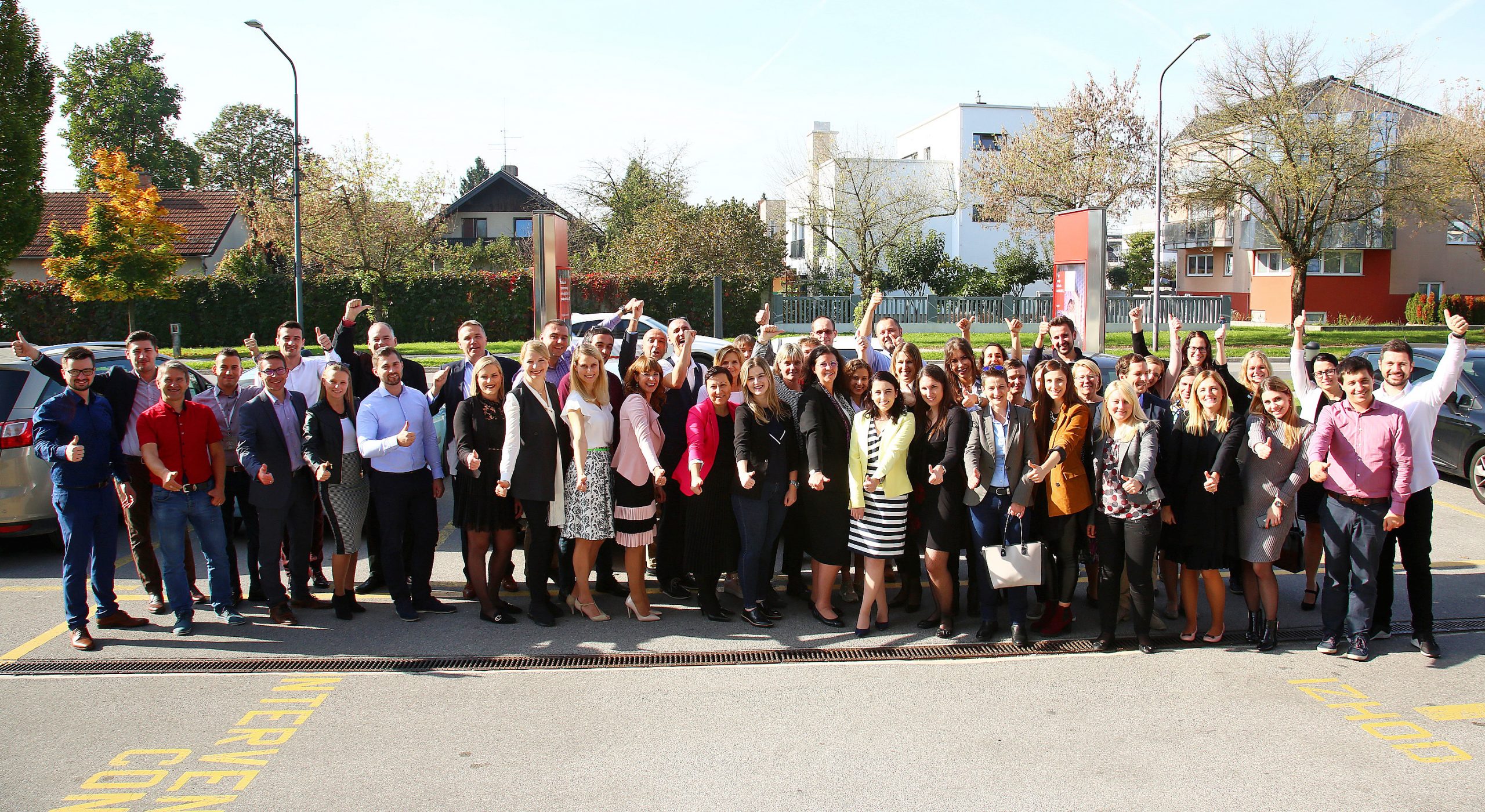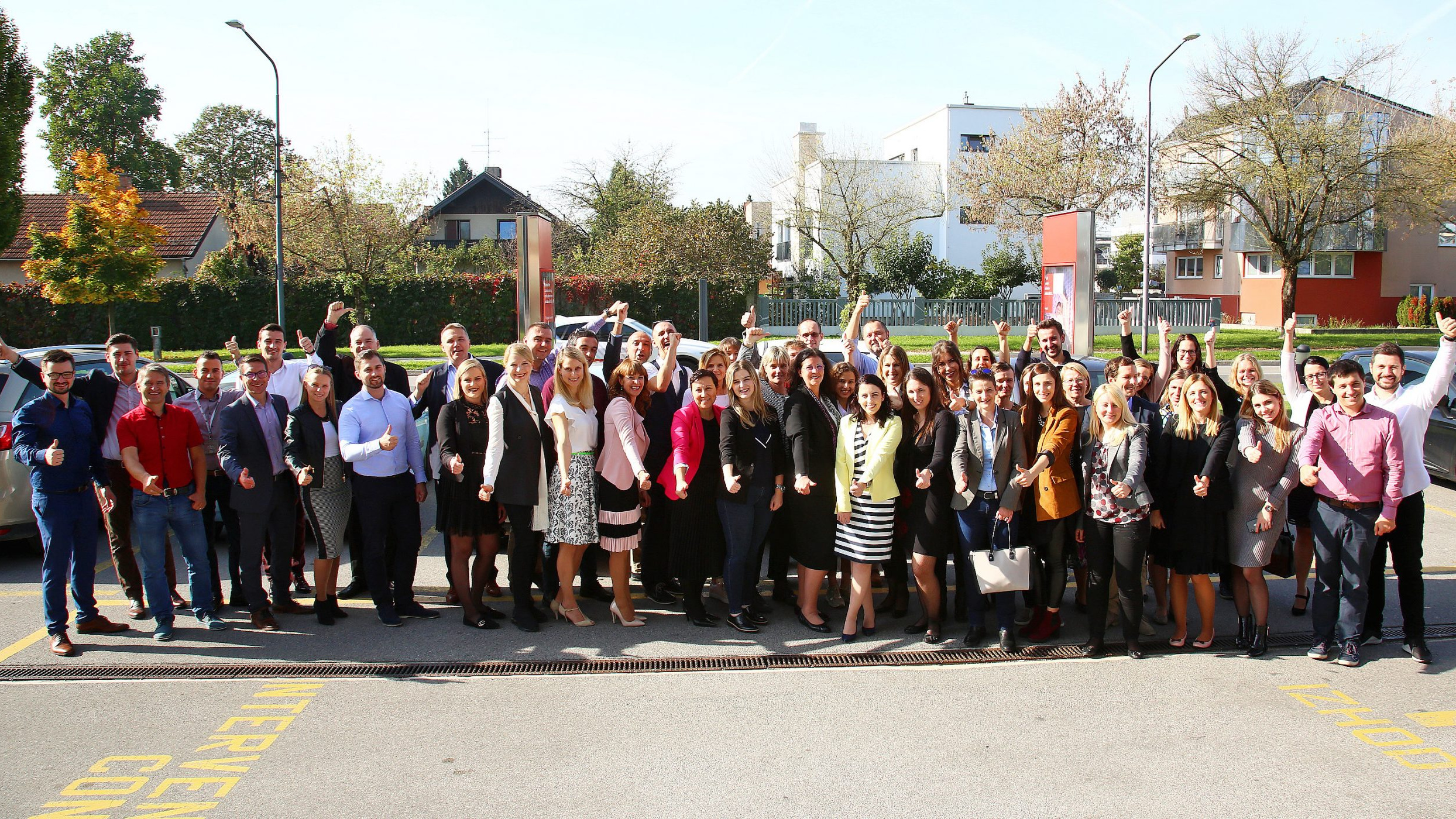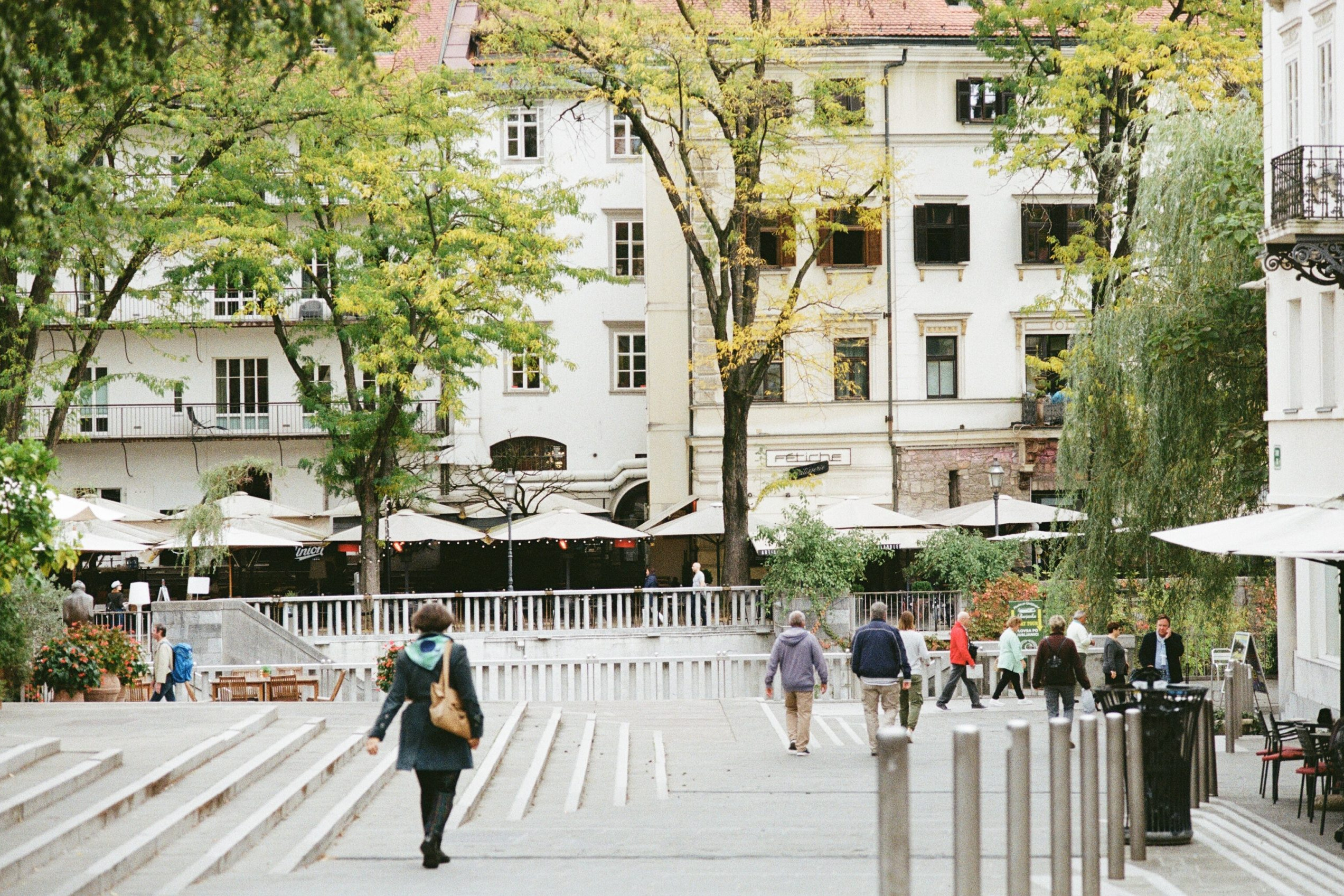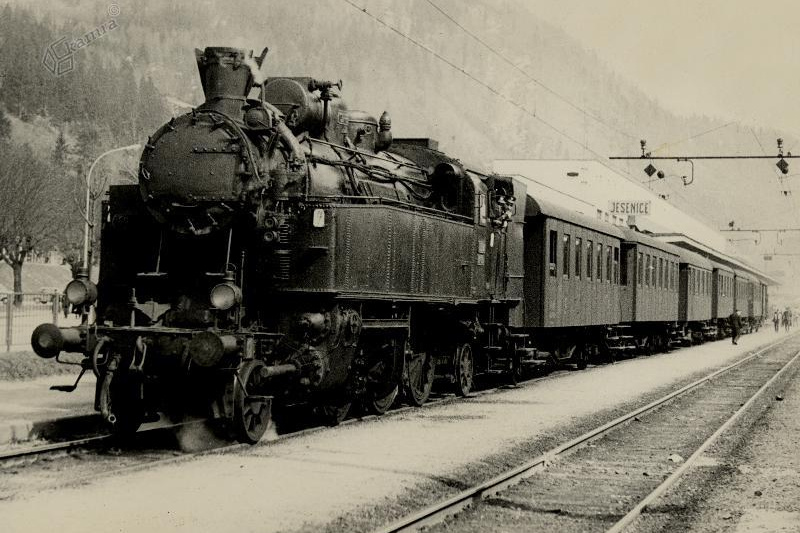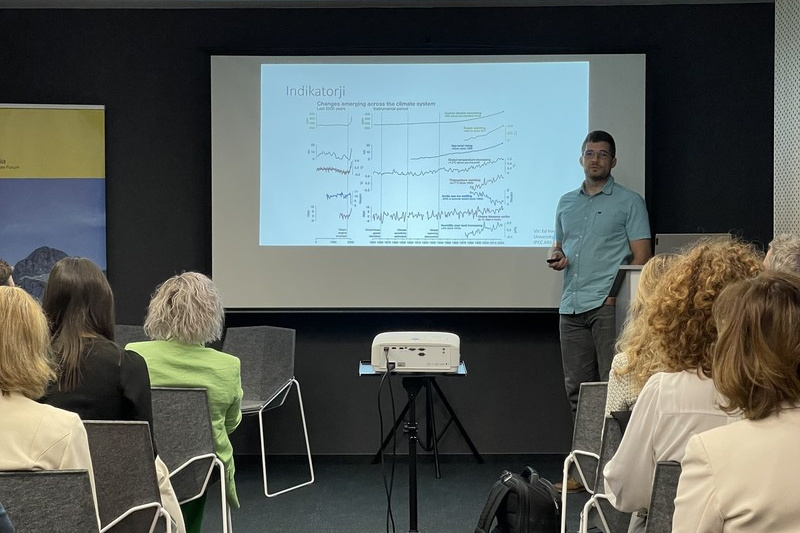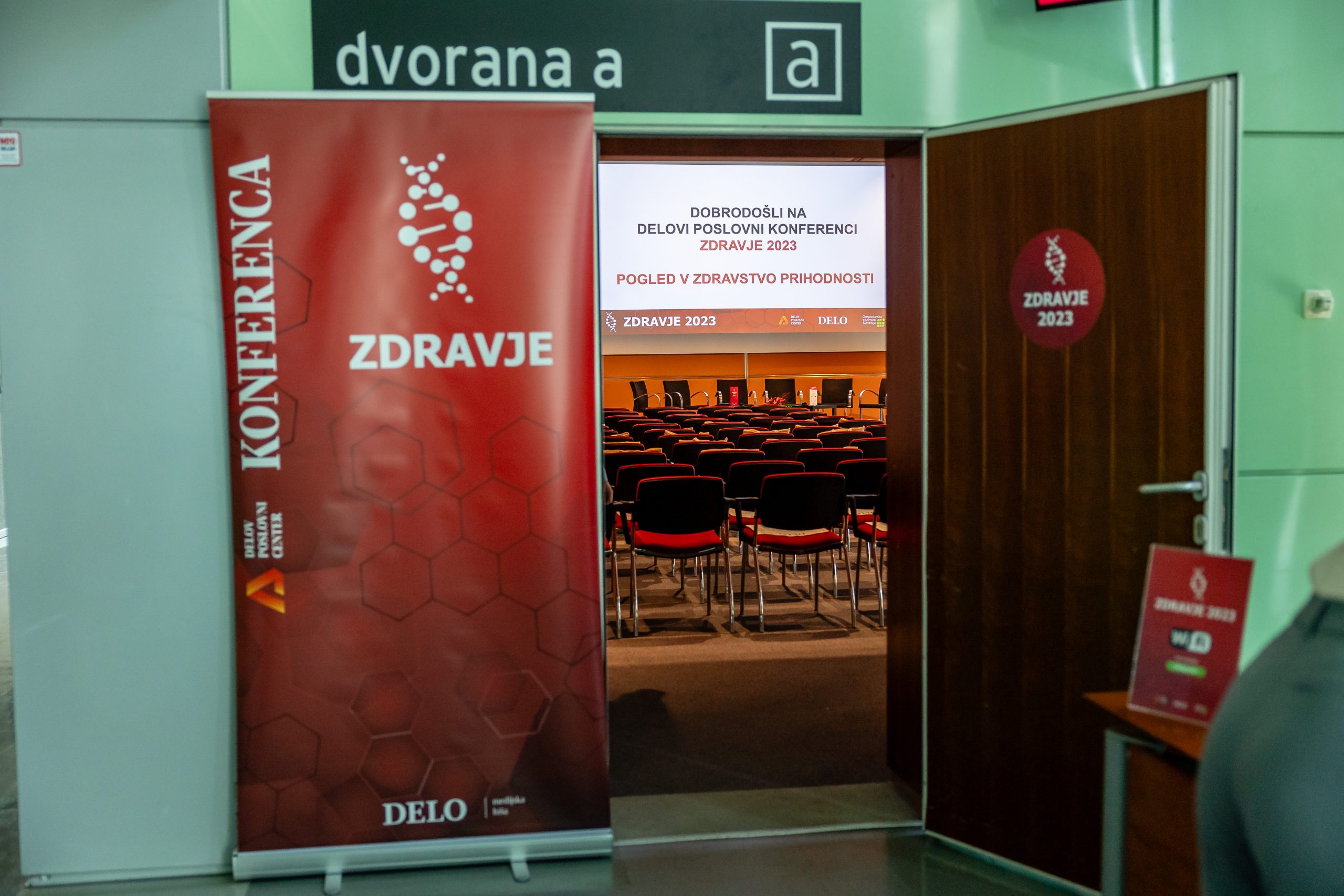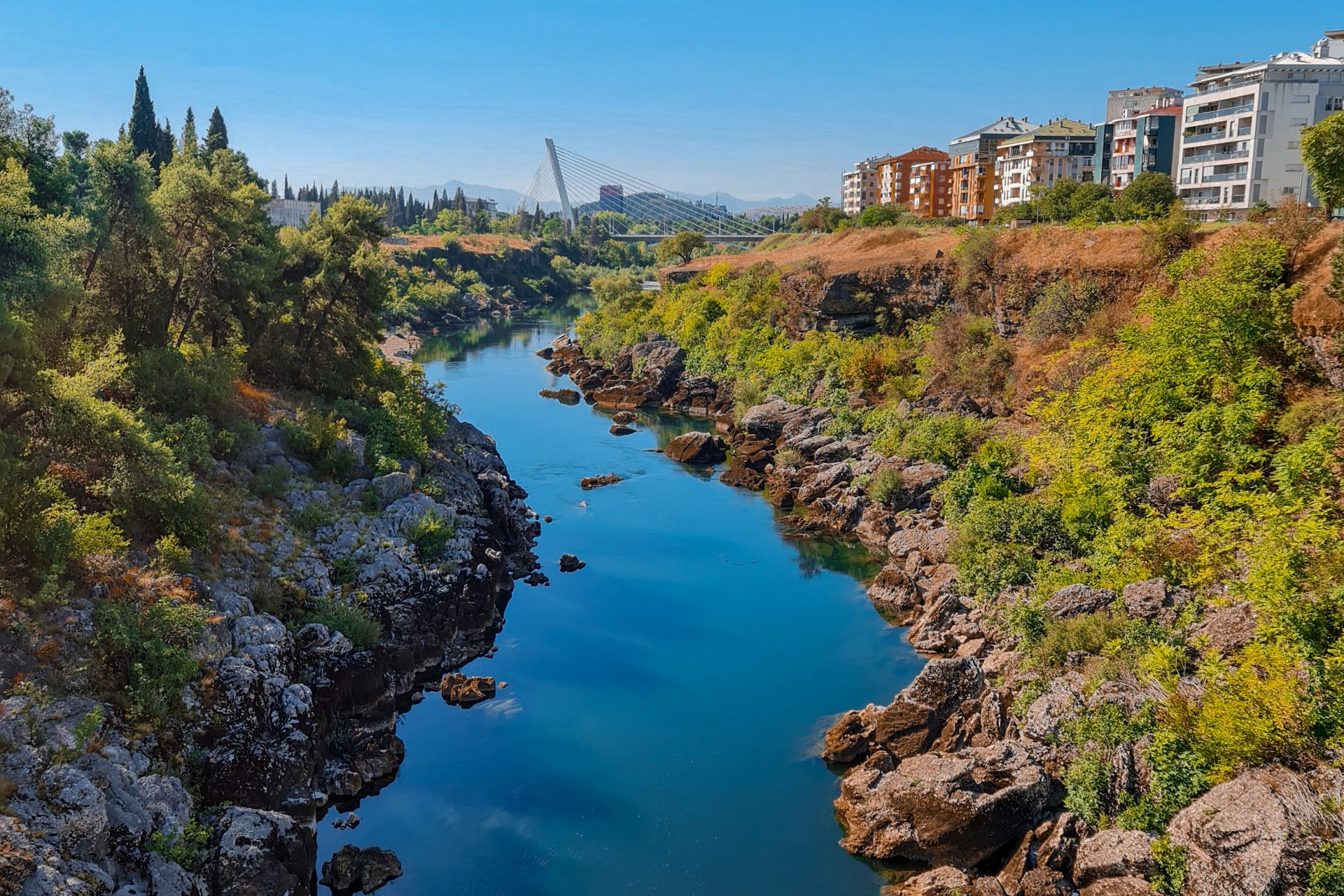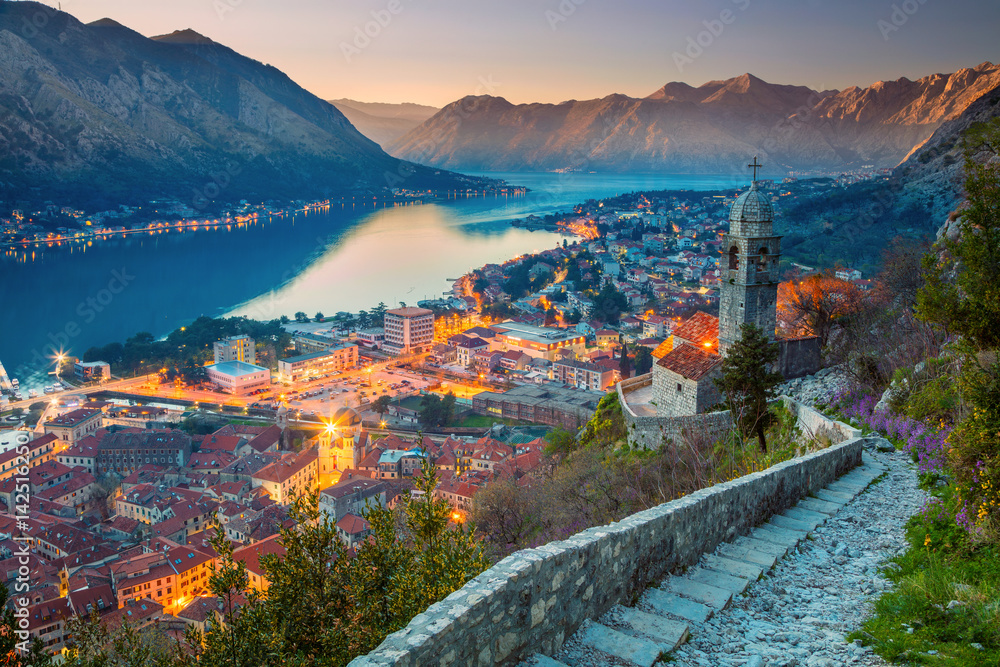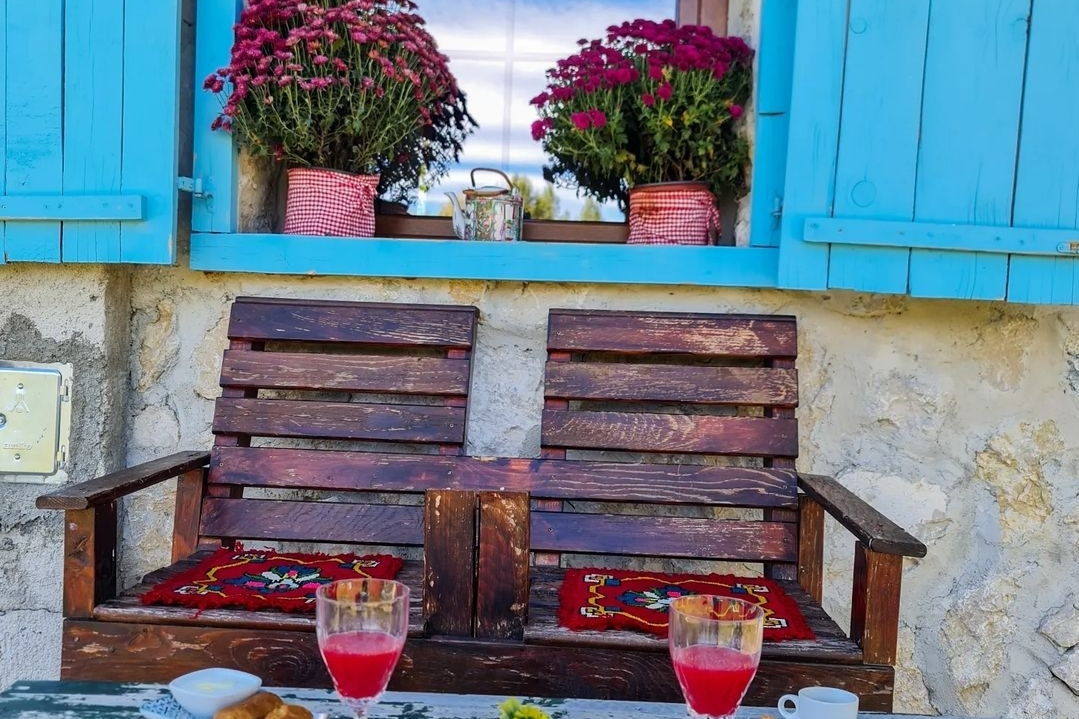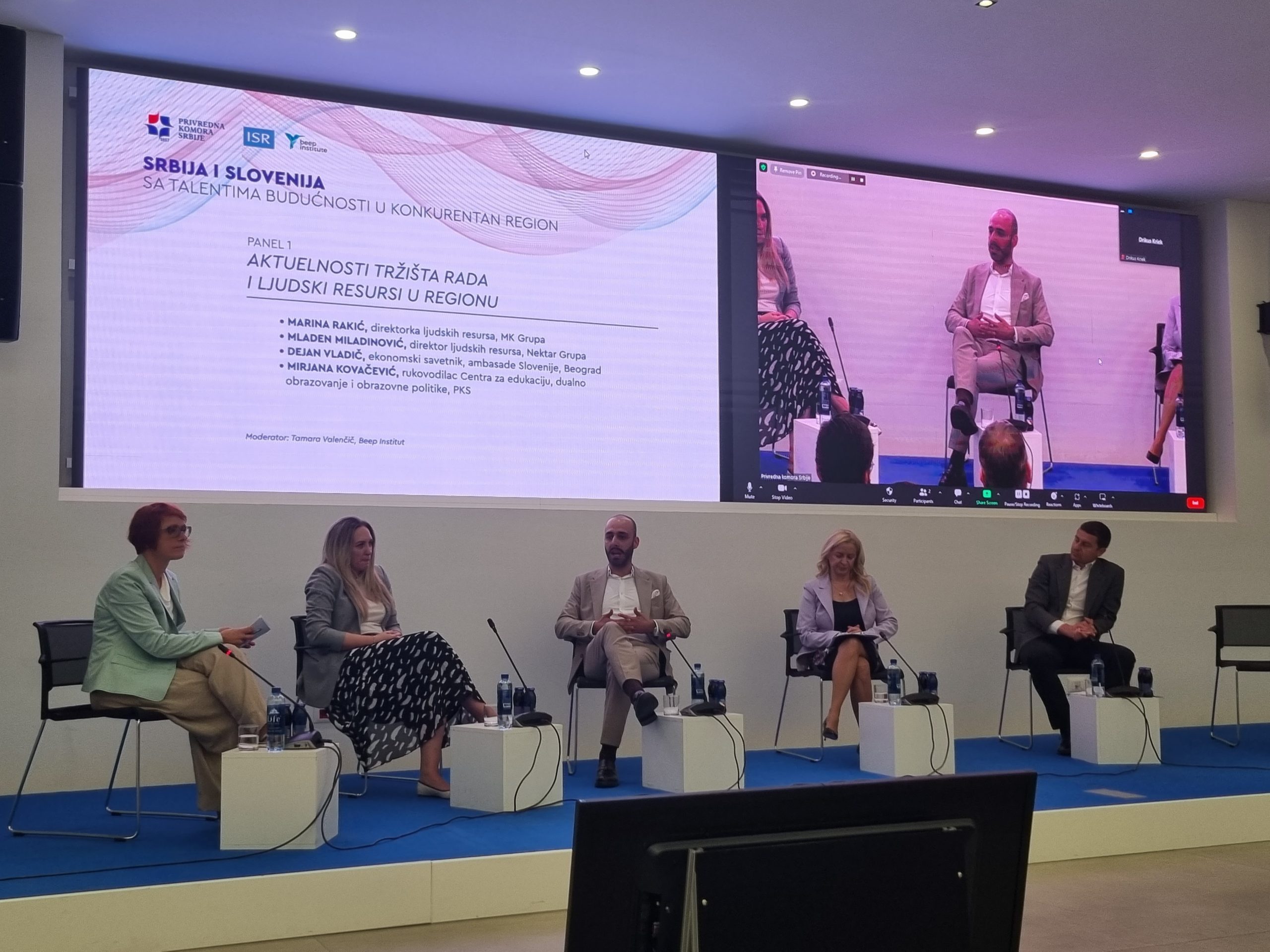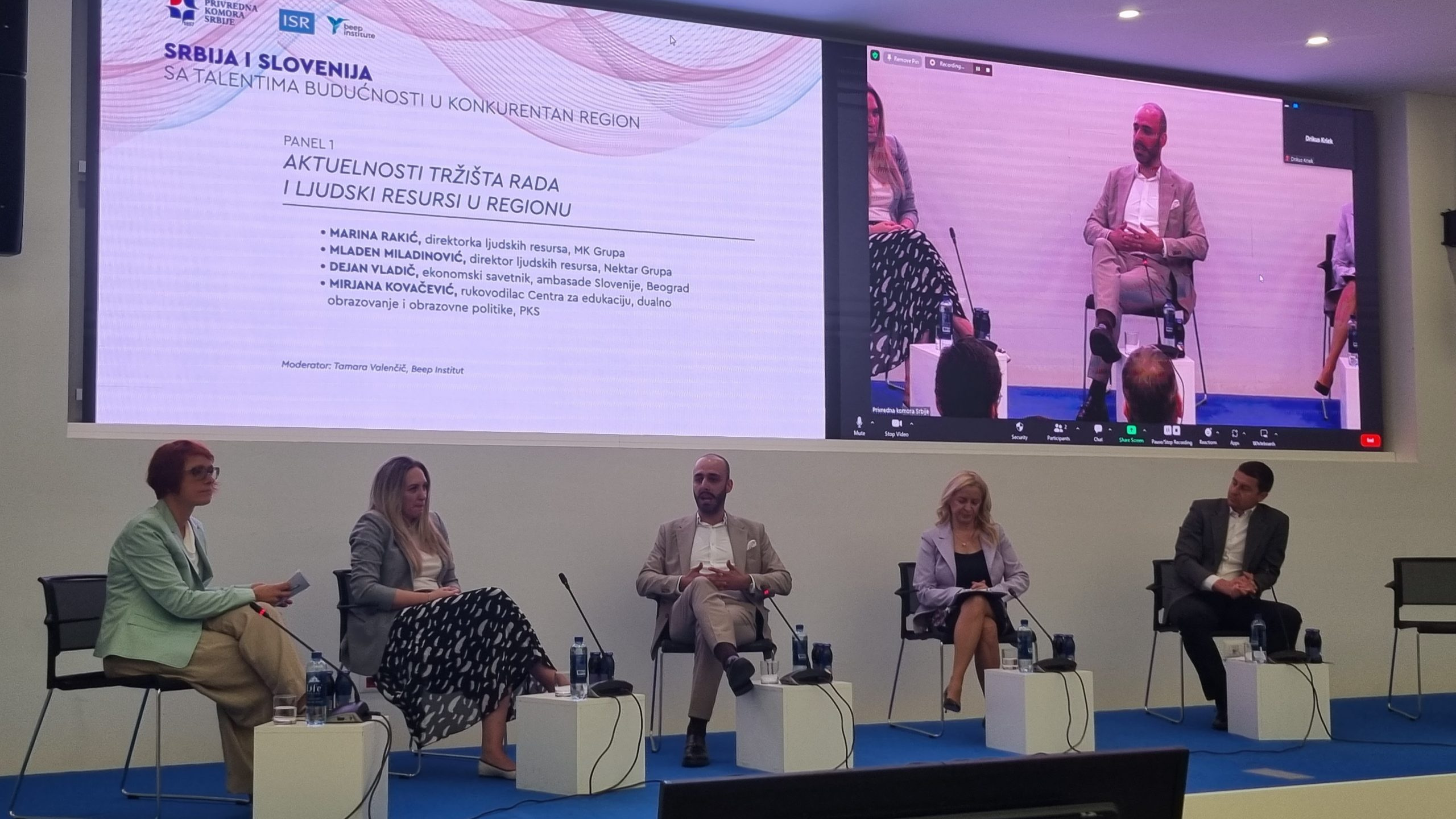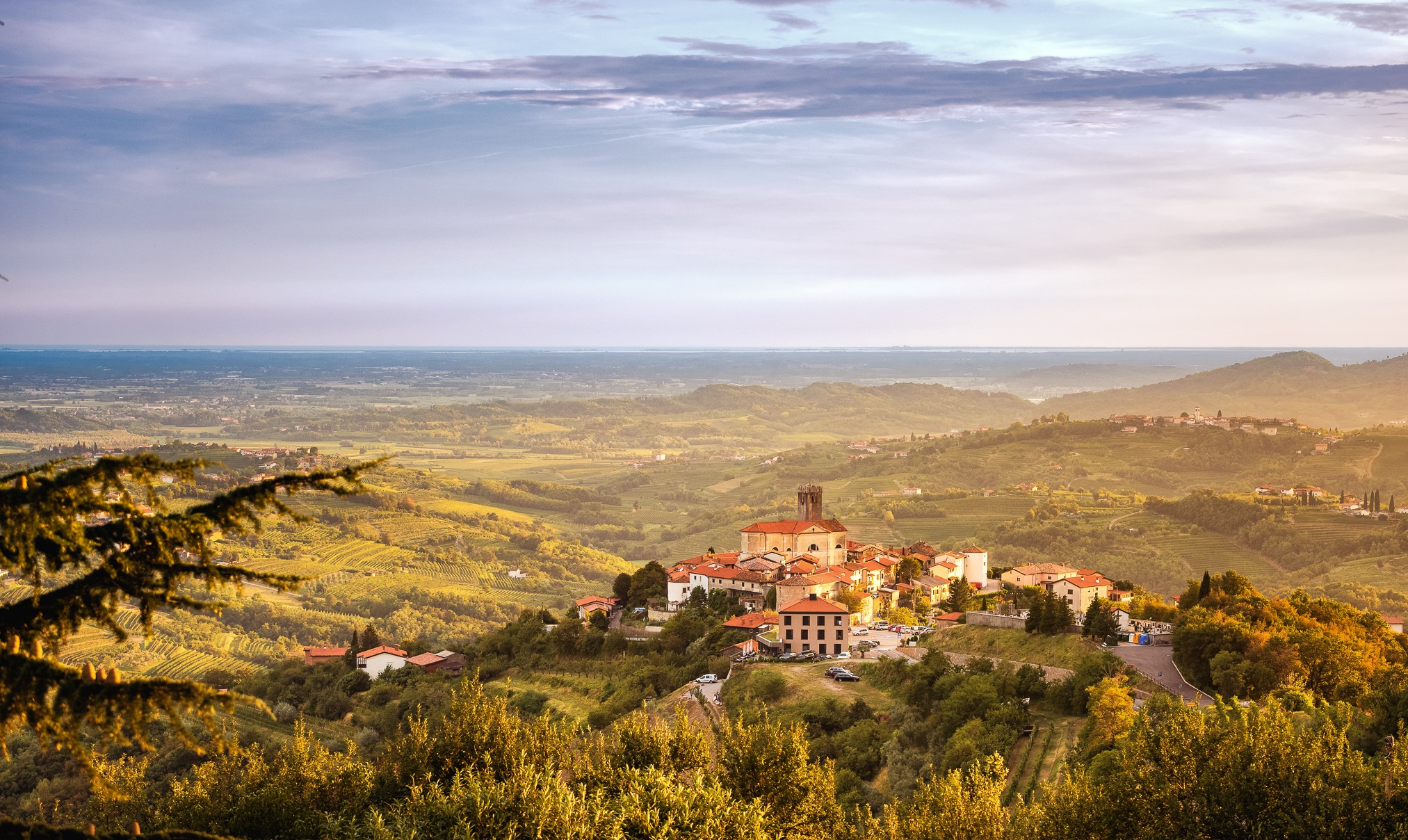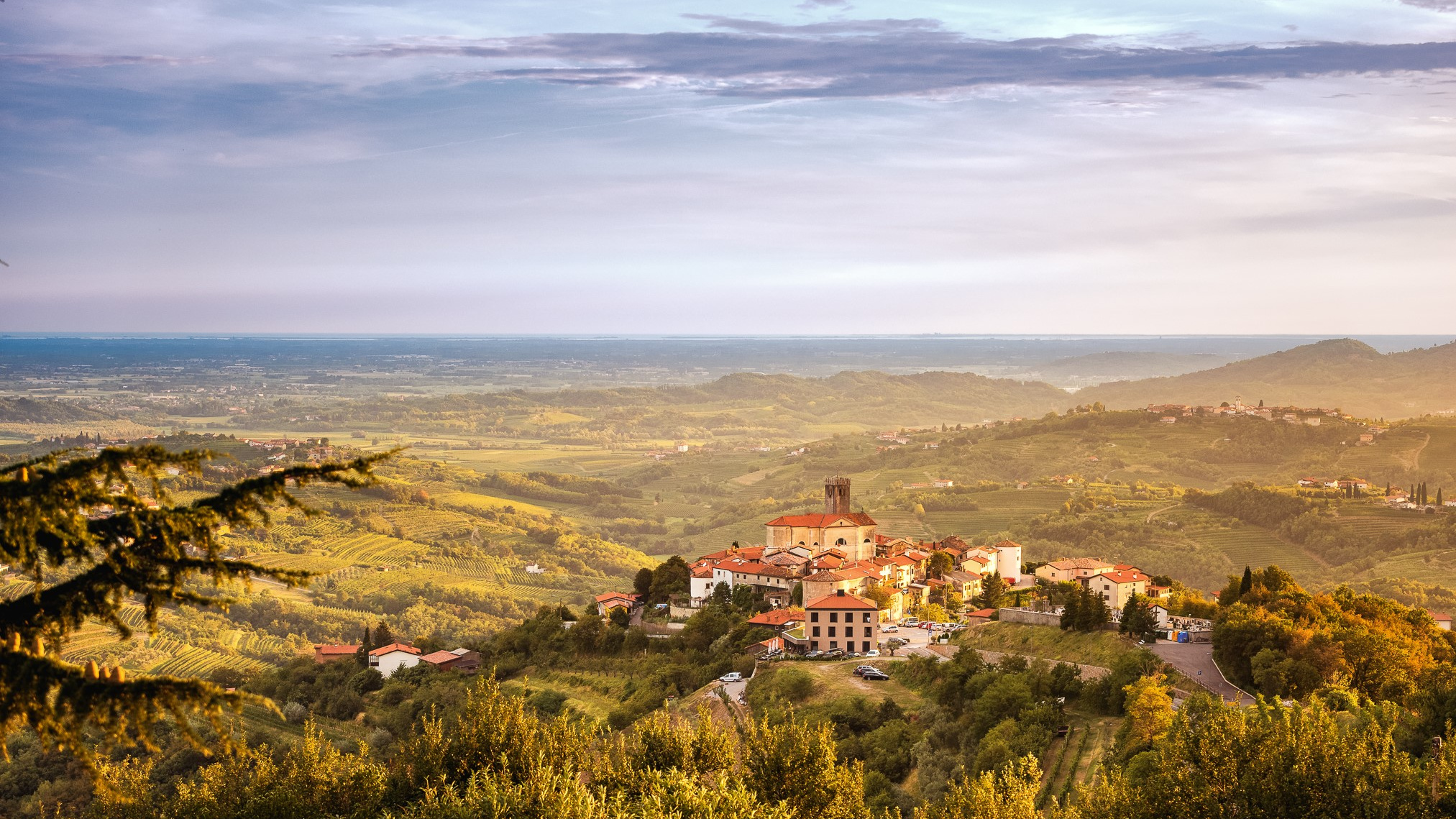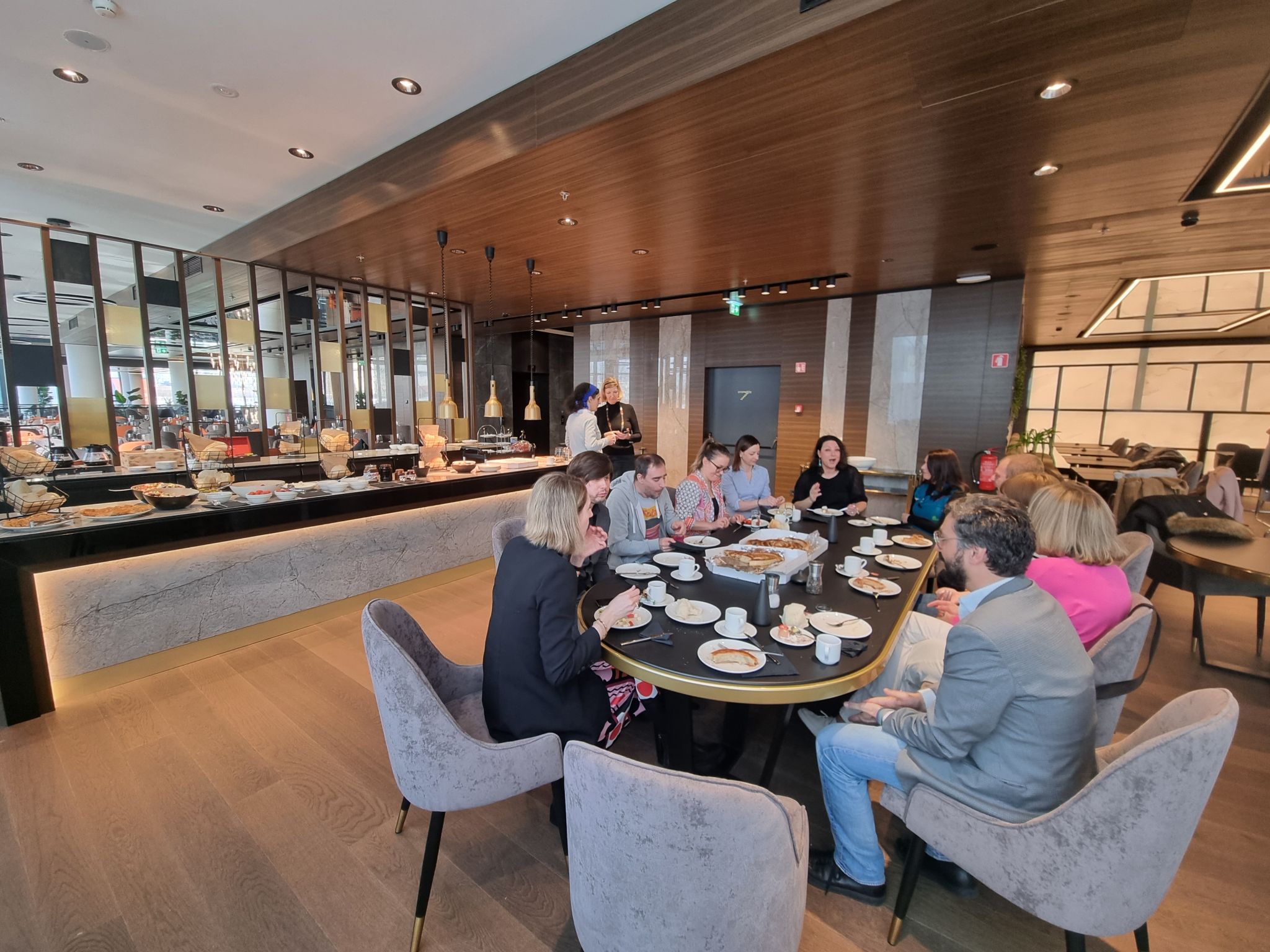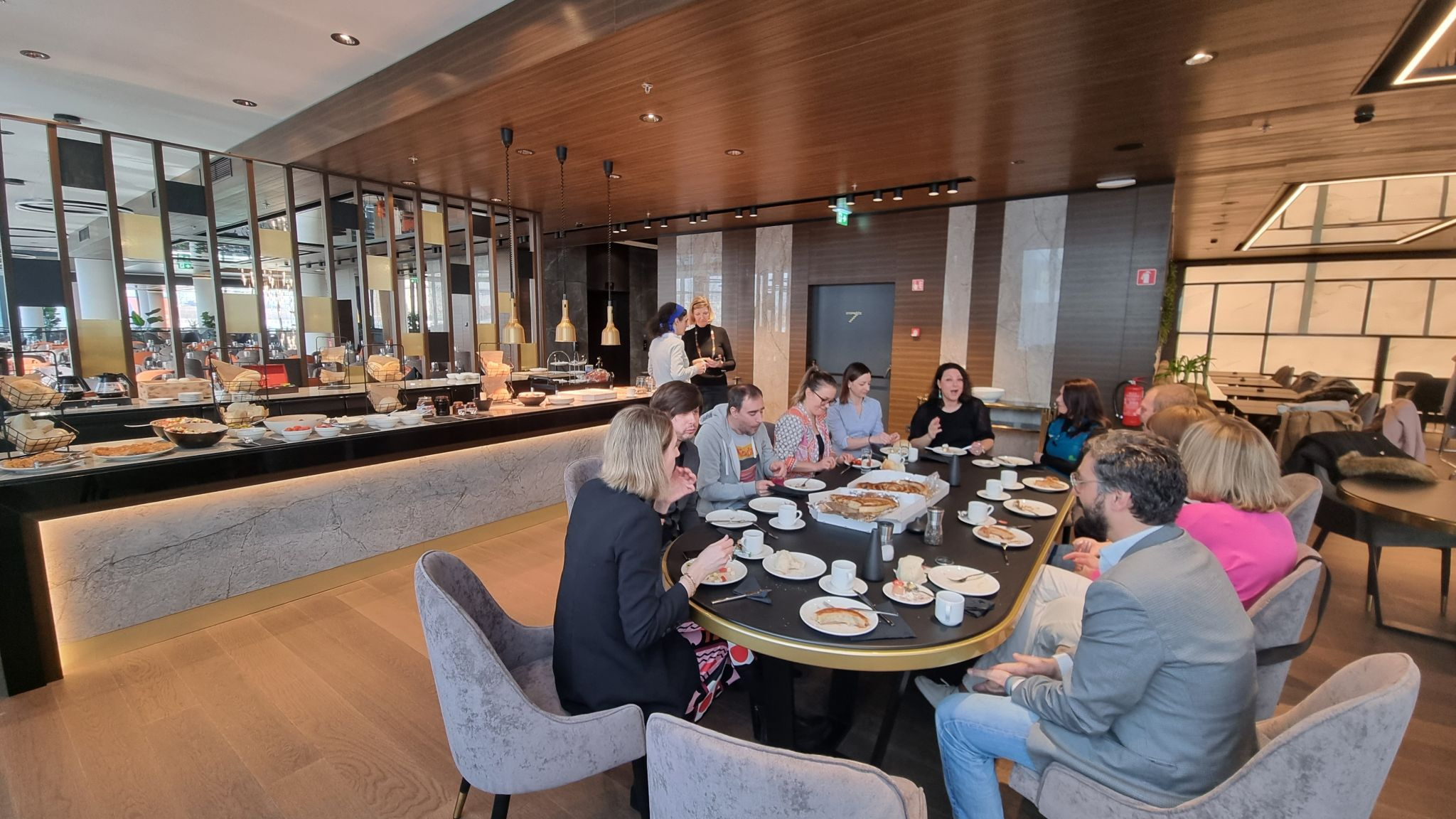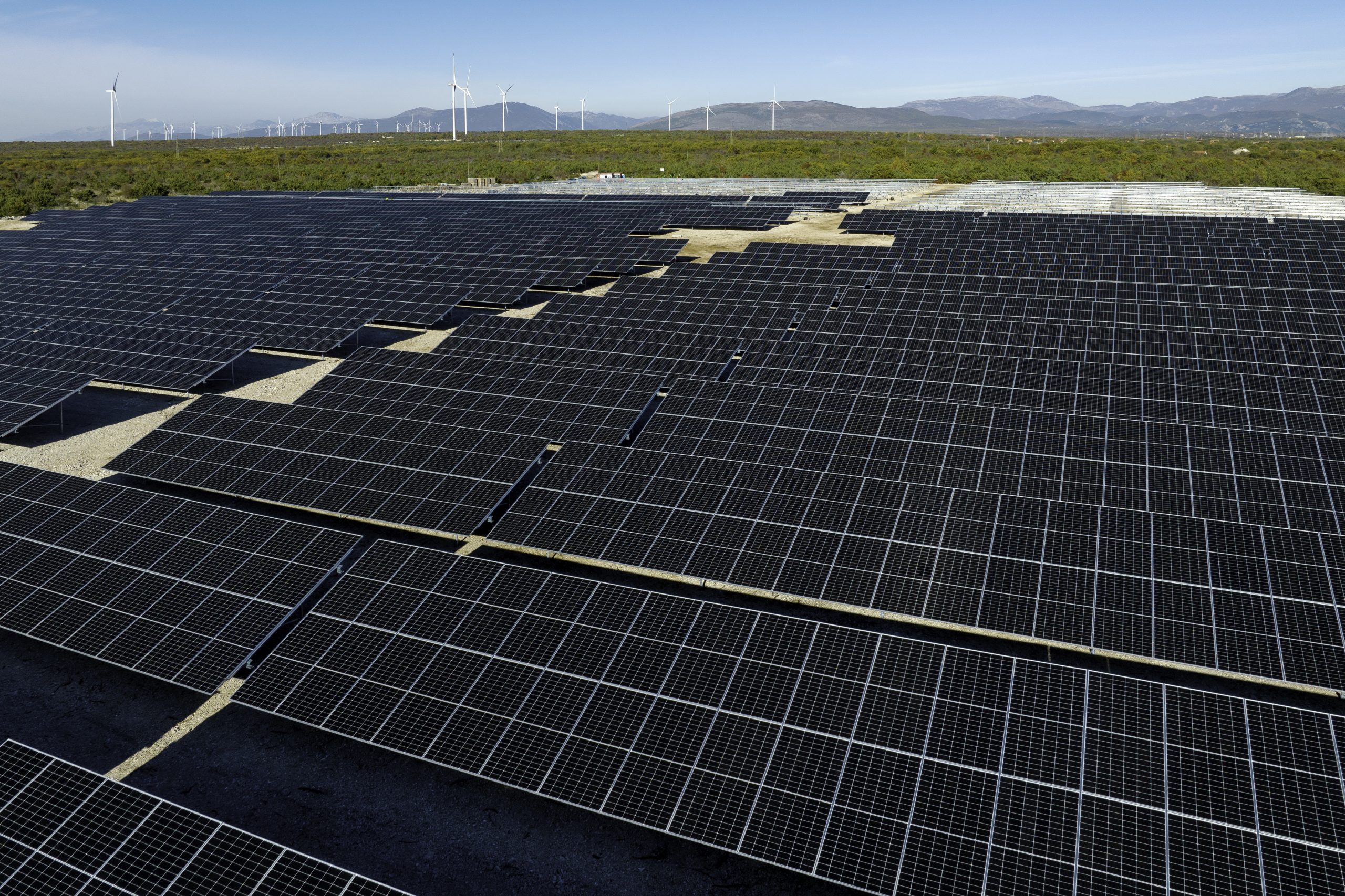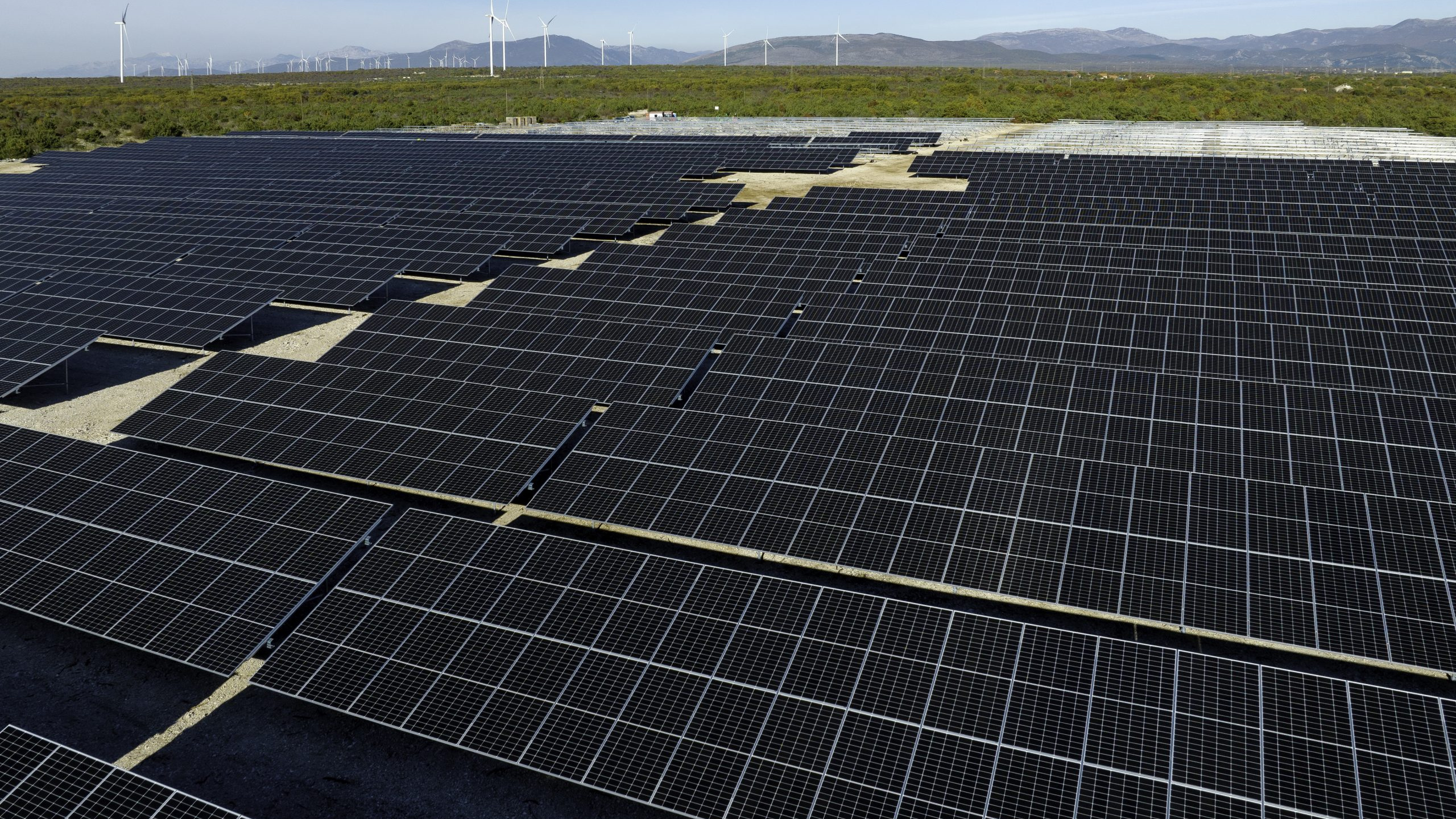Opportunity for development
A culture of collaboration and learning
editor
The Adriatic team
Responsiveness, simplicity, and reliability are the values with which Triglav Group builds a collaborative and agile culture. To further strengthen it, they have also set mobility as one of their key business directions.
In Triglav Group, the largest insurance and financial group in the Adria region and one of the leading ones in Southeast Europe, they strive for a culture where employees transition between project teams, organisational units, and/or companies. This facilitates the efficient transfer of knowledge and best practices. Mobility, as they refer to this process, contributes to professional development and personal growth of individuals, and represents an excellent way to strengthen a culture of collaboration and learning.
Mobility is healthy
While many people prefer to stay within their comfort zone, most at least have some desire for personal and professional development. The opportunity for mobility presents an excellent chance for both. When an individual moves to a different company, they encounter different ways of working and thinking. They also have the opportunity to experience different cultures and meet new people. They may even contribute to the development of a specific project and the implementation of new practices from their field of expertise into another area of work, a different company, and so on.
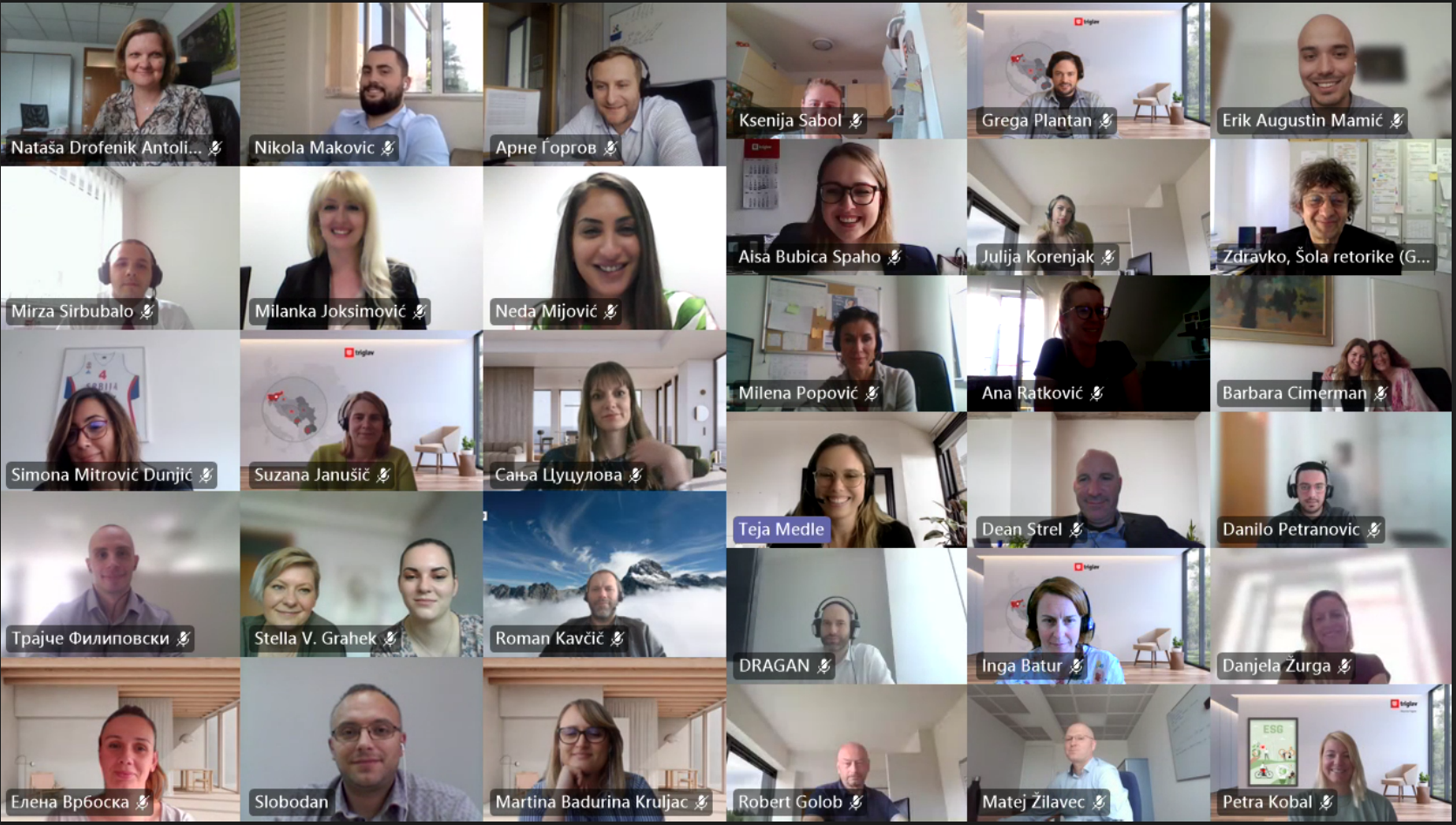
Work and fun
One of the programs within the framework of mobility that has been running for over a decade in Triglav Group is the professional internship called “Spring School” or “Autumn School” (depending on the season of implementation). It is year to gain new knowledge and experiences and strengthen the connections within Triglav Group. The aim of this education program, which typically lasts for 14 days and takes place in Slovenia, is to systematically acquire and deepen the practical expertise of employees and transfer insurance knowledge within the region. The program encourages the sharing of best practices and ideas for improving work processes, as well as the exploration of new business ideas. Alongside the professional activities, the internship also provides opportunities for socialising, offering an environment for making new friendships and getting to know colleagues from Triglav Group. In addition to the professional aspect, there are also social programs and events where participants can discover Slovenian culture and attractions.
Both the participants of the internship and their mentors share the belief that investing in continuous education is necessary for a company to remain competitive and successful. As has been proven time and time again, the organisation’s greatest asset is its employees and the strong bonds between them.
The winning combination
Bringing knowledge and experience into one’s work environment is undoubtedly an advantage for everyone involved – both for the company where an individual completes an internship and the company where they work. For the former, it represents the promotion and transfer of good practices and work procedures. For the company where the individual works, it means gaining a different perspective on internal challenges and opportunities, as well as the implementation of potential new solutions and increased operational agility.
The participant themselves gains the most from the internship experience. They acquire new friendships, knowledge, and experiences, not only for their work but also for their life in general. The mentoring process is a two-way street, as both the participant and the mentor benefit and grow through the internship. Overall, the advantage of this type of mobility is that it allows for the exchange of experiences and knowledge among the companies within Triglav Group, which operates in six countries and seven markets, employing over 5,300 people. Mobility is indeed crucial for the company to acquire true ambassadors of a culture of collaboration and connection.
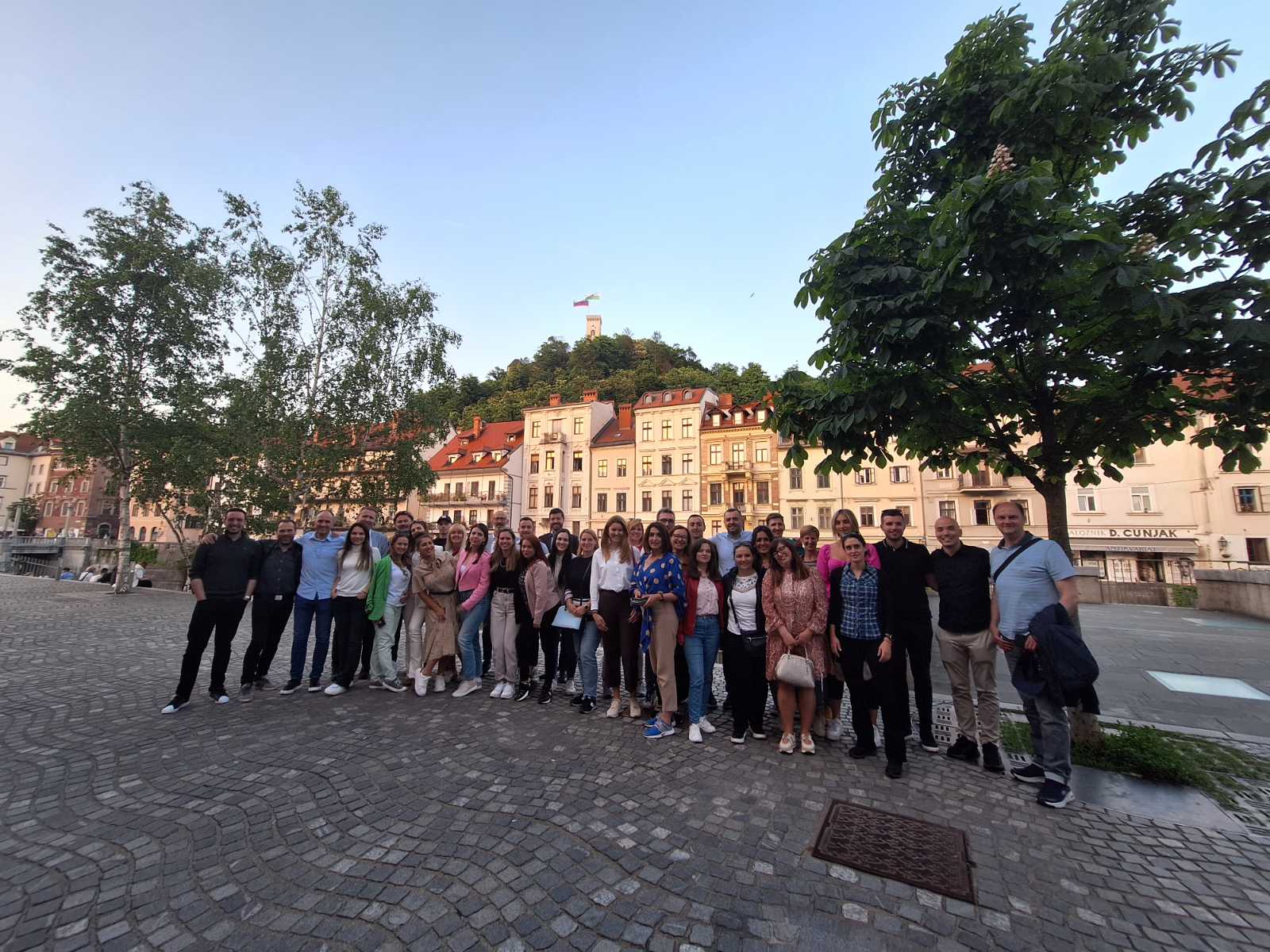
This article was a part of the “Serbia and Slovenia: with the talents of the future for a competitive region” project.
The purpose of this project was to explore the ways in which digital technologies are changing the field of human resources (HR) and to identify best practices for leveraging these technologies and consequently improving results. As part of the project, an event was held in Belgrade where experts from the fields of human resources, education, economy, and technology highlighted trends and plans for implementing digital strategies that can increase employee engagement, productivity, and business results.
Serbia and Slovenia: With the talents of the future to a competitive region
International event
editor
The Adriatic team
ISR, together with the Chamber of Commerce of Serbia and the Beep Institute, hosted the conference “Serbia and Slovenia: With the talents of the future to a competitive region”, which was held on May 29, 2023, in the premises of the Chamber of Commerce of Serbia in Belgrade.
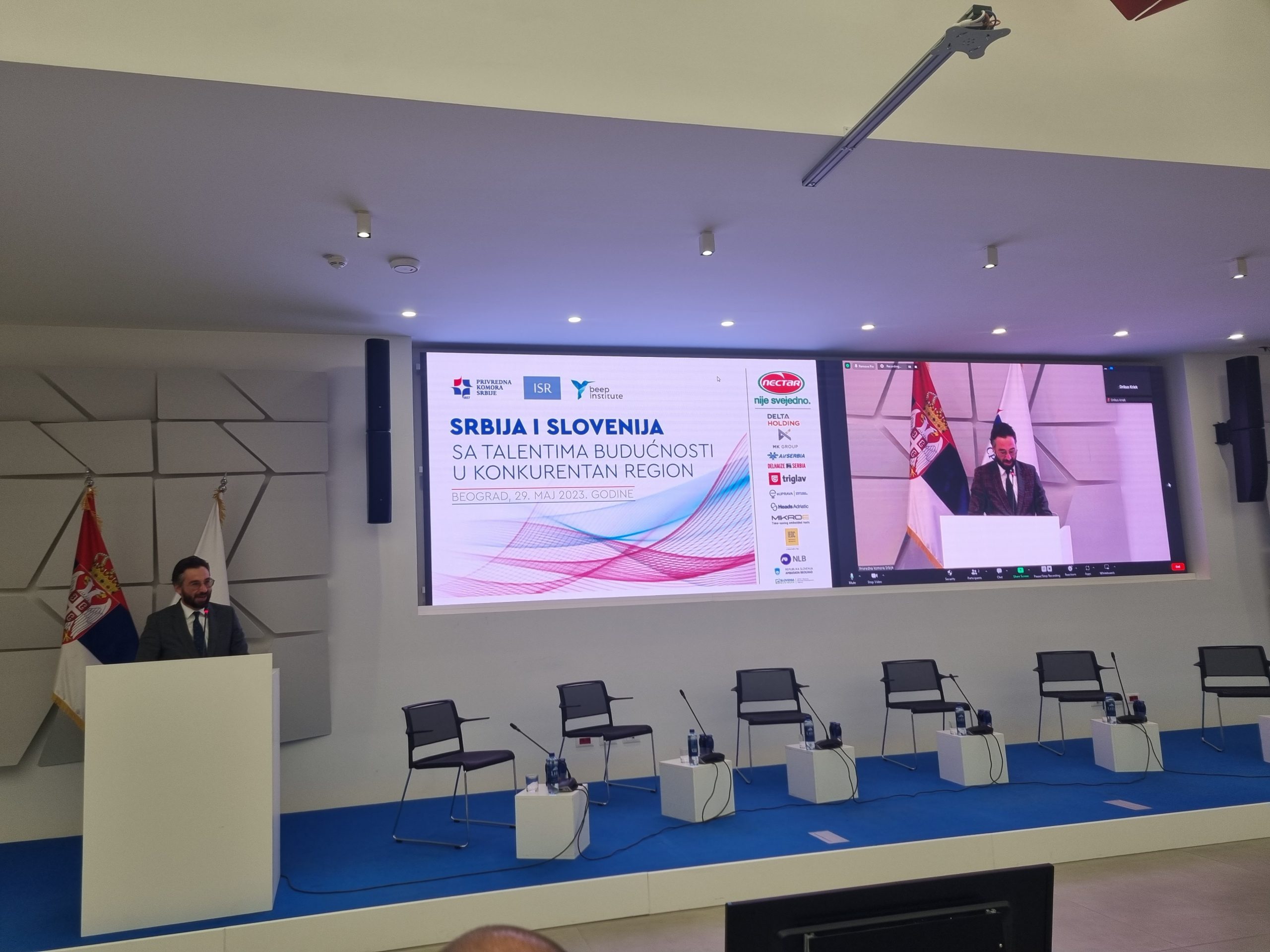
The conference has brought together representatives of companies operating in the region, HR experts from Slovenia and Serbia, with the aim of exchanging experiences on modern trends in HR.
As part of the conference panel, there has been a discussion on the aforementioned topics, which are important for the development of human resources in the region, economic cooperation between Serbia and Slovenia, and the integration of the region into the European Union.
The participants in the panels were the highest representatives of the human resources development sector of leading companies operating in the region, experts in the field of work psychology and talent management, as well as organization management.
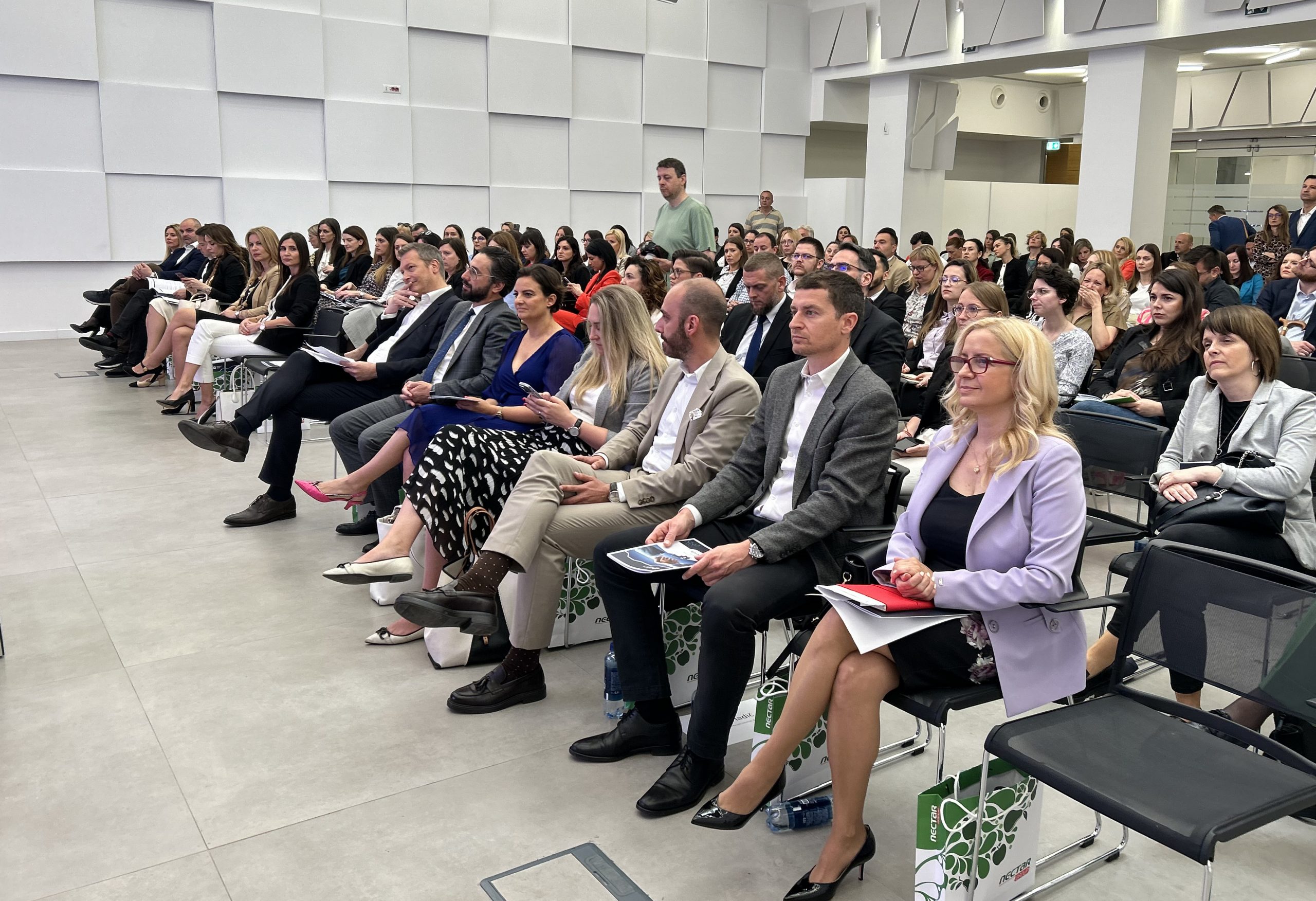
THE FUTURE IS NOW
Tushek Hypercars
editor
Mateja Edelbaher
JOURNALIST AT THE ADRIATIC
This optimal describes the mentality of Tushek Hypercars, a Slovenian company where research and the most innovative approaches are at the forefront of highly advanced and sophisticated hyper cars. The fact that in 2012 they started developing their electric drivetrain, which now powers their most advanced hyper car TS 900, is proof enough that they live for the future.
Aljoša Tušek, the CEO and Founder of Tushek Hypercars, once a very successful racing driver has always been intrigued by implementing the demands and knowledge of a professional racing driver into a sports car, so he decided to make his own supercar, drawing from his racing experience.
In 2008, he began to design the first supercar, the Renovatio TS 500 and with that model Tushek instantly earned a place in the global supercars market. The Renovatio TS 500 was also presented on the BBC’s famous TV show, Top Gear, where they were clearly impressed with the car, which was tested in the French Le Mans before the start of the famous 24-hour race.
In a way, Tušek says, it was the earliest proof of a successful model from a price-performance point of view, as it was very light and manageable, as well as balanced in price for a supercar, priced at around 250,000 euros in 2008.
The next model, the TS 600, secured Tushek’s position among handmade hyper cars on the global market. It was a big success – the UK magazine Auto Car named it one of the four best super sports cars of the year in 2014 and it still remains in the top 10 list of supercars.
Tushek’s goal has always been to have the best car on the market; they have only sold their prototypes so far, as they have never been satisfied enough with any model to go to the production line. The TS 900 plug-in hybrid is the first model where they plan to produce two dozen cars. They presented it at Top Marques in Monaco, and met with a lot of demand. It comes in a road friendly and a racing version. Its popularity is such that it’s one of the top played high performance cars in leading worldwide video games such as Asphalt9 and Grid Legends.

Thinking and working 10 years in advance
At Tushek, they started thinking about the electrification of driving early on, as they quickly saw the direction in which the automotive industry was heading. They began with the development of their electric drivetrain system in 2012, because, as Tušek says, they always try to work ten years in advance.
Their electric drive unit TUSHEK DIRECT ELECTRIC DRIVE (TDED) is the result of Slovenian technological know-how and was developed on the basis of engines used in advanced lightweight aviation. Starting from such high-power aviation engines, it took over 6 years of development to reach the 2018 patented drivetrain, currently one of the best automotive electric drive units on the global market.
As Tušek points out, with electric drives, the most important compromise is between the range and the weight of the batteries. This is precisely where the efficiency of the drives developed at Tushek prevails as one of the best in the world. In fact, their drivetrain is capable of operating with only 10 KW per 100 km during normal driving, with the batteries weighting only 65 kilograms in the TS900 Hybrid.
The development of their hypercars, as well as the drivetrain, depends on the development and use of new materials for the drivetrain and battery casings, which must be ultra-light and at the same time ultra-durable. Thus, they started collaborating with the Faculty of Polymer Technology from Slovenj Gradec, in the development of special materials for battery casings that are capable of withstanding extremely high stress.
Strictly limited to just 12 units the TS 900 RACERPRO is designed to provide the best performance for the most demanding racing drivers. With a power to weight ratio of 1.13 hp : 1 kg, the RacerPro includes only what is needed for the highest performance on the race track.
The future is electric
Internal combustion engines are coming to an end, and they will probably last the longest in hyper cars and auto-motor sports. The engine sounds that people are used to now will be replaced by new ones. As Tušek jokes, now electric cars sound similar to “small UFOs”, but in the future, he adds, they will be a matter for each individual manufacturer to decide as part of the design of the car.
At Tushek they are focused on development and are investing heavily in testing new materials and developing electric drivetrains that will power their hyper cars entirely in the future. But, due to the expected delay in the transformation to electric cars in auto-motor sports, they are currently betting a lot on their hybrid TS900, which is, as they say, a technological revolution on four wheels, that shows the real use of new technologies. It creates new driving dimensions made possible by hyper-hybrid technology and a drive that has many patent-protected solutions.
However, since they do not see the future in hybrids, but in fully electric cars, according to Tušek, they are now focusing on the development and production of a fully electric hyper car, codenamed TS X000. He claims it will be a completely different hyper car, compared to the ones we are used to seeing on the roads now. It is still a mystery, how much horse power it will have, but Aljoša Tušek hinted, that it might have more than 2000.
So far, they have made a proof of concept for their all-electric car, and they want to test the new TS X000 for the first time on a racetrack towards the end of 2023. They plan to break into the global market in 2024, and then start with small-scale production of the car. Their goal is to create a model of the car that can be produced over a long period.

A lot od research, testing and new radical approaches, stemming from Aljoša Tušek’s racing experience and his feel of the car, were infused in TS 900. Powered by an Audi based, 4,163 cc dry-sump FSI V8 engine, to which Tushek added its compressor, and squeezed out 550 kilowatts of power and 690 newton meters of torque. It is installed centrally in the rear of the car, where, with the help of a Hollinger sequential gearbox, it drives the rear wheels. It combines the best of both worlds, as the internal combustion engine is joined by two compact electric motors on the front axle, each driving its own wheel, developing a power of 480 kilowatts and a torque of 1,000 newton meters, which is available throughout the entire rev range.
Development partners of the automotive industry
Tushek has become a development company as they invest 90 percent of their time in development, meaning that their R&D department is growing fast, but they have practically no production. They see their future in development, designing and assembling their own cars, and using certain parts from companies that are pioneers in their fields. Most of the cars are and will be the result of Slovenian know-how.
The development and patenting of their electric drivetrain has enabled them to establish partnerships in the automotive industry, that will financially support further growth and development. They also see the future in cooperation with the automotive industry, Tušek says, where they are currently a development partner to a global car manufacturer.
A lot of research, testing and new radical approaches, stemming from Aljoša Tušek’s racing experience and his feel of the car, were infused in TS 900, Powered by an Audi based, 4,163 cc dry-sump FSI V8 engine, to which Tushek added its compressor, and squeezed out 550 kilowatts of power and 690 newton meters of torque. It is installed centrally in the rear of the car, where, with the help of a Hollinger sequential gearbox, it drives the rear wheels. It combines the best of both worlds, as the internal combustion engine is joined by two compact electric motors on the front axle, each driving its own wheel, developing a power of 480 kilowatts and a torque of 1,000 newton meters, which is available throughout the entire rev range.
THE ADRIATIC
This article was originally published in The Adriatic Journal: Strategic Foresight 2023.
If you want a copy, please contact us at info@adriaticjournal.com.
A dire decade ahead?
Business environment
editor
Domen Prašnikar
JOURNALIST AT THE ADRIATIC
In the last four decades, the world recorded relatively favourable conditions for growth as the demographic picture was still robust. The free market and globalisation were effectively lowering prices and raising standards, and in the last 20 years, in particular, we had historically low interest rates.
However, the next decade is going to be different. We will begin to see the first signs of the effects of an ageing population, the process of deglobalization, and geopolitical battles for dominance over financial and raw material flows. This will result in rising inflation and high levels of debt. Central banks will have the extremely demanding task of striking a balance between maintaining the credibility of currencies with a suitably high interest rate on the one hand, while ensuring appropriate growth and a suitable level of employment on the other.
Currently, after the Covid-19 shock, we are recording high GDP growth and increased profits in companies that are creating “reserves” for difficult times. Systematically, the economy is under-indebted, as is the population, but the excessive increase in public debt caused by inefficient spending of public money is concerning. Due to full employment and excessive inflation, central bankers are being forced to raise the price of money and thereby lessen demand. It seems that the bankers will tighten their belts all the way until “something breaks”, and then the tables will turn, and Central Bank delay will only increase volatility. It is very likely that there will be a decline in economic activity in the future and that inflation will continue beyond the target of 2%, therefore we must prepare very prudently for a period of stagflation.
The price of goods is a result of the balance between supply and demand. Governments can intervene in the market and regulate prices, as is currently happening with energy products. However, in the long term, this only distorts reality and does not allow for increased investment in the much-needed energy infrastructure, which would potentially allow prices to fall in the EU. The proverbial ECB can print money, but it cannot print oil, gas and electricity. Therefore, we can predict that with the reduced purchasing power of the population and fall in the value of assets, demand will decrease due to pessimistic sentiment and thus prices will slow down initially; however, in a later phase, with the delayed reaction of central banks demand will rise again and with limited resources, the inflationary cycle will restart. In this decade, we can therefore expect several waves of inflation with higher interest rates.
Companies should not rely too much on their governments for help
In the Covid-19 situation, based on the assumption of zero interest rates, all countries readily handed out helicopter money which helped to weaken monetary policy, and this fiscal measure prevented bankruptcies and a drop in GDP. This time around, however, the situation is more insidious, with increased interest rates and already heavily indebted government coffers. Will countries dare to borrow heavily again in order to help companies? Less likely than before, since the manoeuvre is less effective each time around. They will, hopefully, help in a more targeted manner. However, governments will not help zombie companies that do not have perfect business models and who exist only because of access to cheap money, for example, various developing technology companies with ideas that do not bring prevailing profit.
The health of Slovenia’s economy is basically good and there will be fewer problems at the aggregate level, but we can expect problems in those production companies where they are not able to pass on the increased prices to customers i.e companies with no pricing power. In production companies where the EBITDA margin is extremely low or for established traders who are over-indebted, for whom the increased Euribor will soon begin to squeeze and erode cash flow and liquidity. All companies will at some point record a drop in orders, including service companies, which are generally more resistant to higher energy prices and increased Euribor, at least in the short term.
Global PMI indices are historically low. The first major layoffs in the USA have begun, orders are falling in Germany, and we all know that we are “importing” a global recession to Slovenia, albeit with a certain time delay. It is difficult to raise business resilience rapidly in companies, however the EU has several grant schemes that will help companies make investment decisions, which may prove to be one of the main “solutions” for companies in the coming years.

Companies need to improve their financing structure
Banks raise interest rates on deposits to a very limited extent, while lending rates are already significantly higher due to the effect of higher Euribor and higher mark-ups. Banks have limited the offer of fixed interest rates for long-term loans, and it is no longer so easy to refinance. With short-term revolving lines, it is still possible to get a fixed interest rate, but it is now at a higher level than 6 months ago. No one has a crystal ball, and we don’t know how far the ECB will raise interest rates, so the dilemma of whether to speculate or to decide on a peg arises. It seems sensible to “fix” at least part of the debt as soon as possible so that the company knows with at least some certainty what the financing costs are.
Irrespective of the future movement of Euribor, companies will still have the need to improve their cash flow. They will have to go through all bank and non-bank financing offers such as SPS direct financing of companies via various schemes or SID bank special long-term loans, however, some companies will also need an EGP guarantee if they don’t have quality mortgages to offer as insurance. Favourable loans to companies will be available from certain banks that are backed by a SID portfolio guarantee or those who can factor in their receivables, and where extremely fast access to fresh liquidity is possible, albeit from more expensive sources such as equipment leasing, private loan funds, inter-company financing, periodic tenders of the SRRS fund or newly emerging funds for the ownership support of young growing companies.
In addition, companies can check the offers of private funds with partial equity and/or mezzanine financing, both of which provide a more stable long-term source. Furthermore, quite a few (family) businesses may already be flirting with exit strategies due to the age of the founder, and future uncertainty may also be a key trigger for equity sales. Unfortunately, the optimum time and the highest valuation ratios are probably behind us. The stock market indices have also fallen from their peaks, but it still may be more prudent to sell the company within the next year for a “normal” market purchase price, than to think about rehabilitation in 3 years, if the future is still as uncertain as it is today.
Domen Prašnikar is an experienced professional in the field of financial consulting and demanding restructuring cases. In 2014, Domen founded his own consulting company, Valior d.o.o., which primarily focuses on Slovenian small and medium-sized enterprises, to which he offers a broad range of business and financial consulting services. As a member of the Turnaround Management Association, he is familiar with trends and the world’s best practices in the field of company restructuring. He is excellent at finding alternative solutions and managing complex situations. Together with his team he designed a benchmark methodology for measuring and managing business resilience adapted to Slovenian companies to guide company management in developing strategies and solutions for long-term business stability in conditions of increased uncertainty.
THE ADRIATIC
This article was originally published in The Adriatic Journal: Strategic Foresight 2023.
If you want a copy, please contact us at info@adriaticjournal.com.
Revolutionizing transportation infrastructure: How DARS d.d. is driving economic growth through digitalisation
Digital solutions for our everyday drive
editor
Tinkara Vizovišek
JOURNALIST AT THE ADRIATIC
Digitalisation is a crucial catalyst for a country's economic development as it enables a more efficient and effective use of resources, increases productivity and promotes innovation and creativity. Generally speaking it allows businesses to automate their processes, reduce the need for manual labour and increase efficiency and productivity. This can lead to cost savings, which can be reinvested in other areas of the business. By providing new tools and technologies, digitalisation can also lead to the development of new products and services that meet the changing needs of consumers.
Slovenian company DARS d.d. has walked through a very dynamic and diverse path. “Connecting Slovenia” is the slogan the company chose many years ago and it’s still as relevant today! DARS not only expresses the integration of Slovenia in terms of the construction of the highway system but also connects the past with the present and navigates the direction of the future. Digitalisation plays a critical role in improving the efficiency, safety, and sustainability of building, managing, and maintaining motorways and expressways. And DARS d.d. can be considered as one of the crucial co-creators of Slovenian’s economy, especially in terms of the development of transportation infrastructure. By providing efficient and effective digital solutions, the company helps improve the productivity, safety, and sustainability of the transportation network, which can in turn drive economic growth and development. Motorways and expressways are key components of the transportation network, and efficient management and maintenance of these assets as well as stimulating innovation are essential for ensuring the smooth functioning of the economy.

Which projects shape the future of the Slovenian highway system?
C-Roads Slovenia
C-Roads introduces cooperative intelligent transport systems for the transfer of information in the present time. These systems are based on infrastructure-vehicle and vehicle-infrastructure communications. C-Roads are primarily intended to increase traffic safety, improve mobility and reduce harmful emissions and have a direct impact on society. Due to the quick detection of irregularities on the road such as traffic accidents, animals on the road, irregular driving, etc., drivers can get the necessary information faster than before. With the help of the PROMET+ application, which directly transmits what is happening on the road, drivers are immediately aware of what is happening and thus ensure the safe behavior of other road users.
Currently, the C-Roads system is set up on the Postojna-Divača highway and can be used by anyone equipped with the necessary technology. The plan is to equip the entire highway infrastructure in Slovenia with the technology.
Building information modeling (BIM)
Digitalisation supports projects in all phases of the life cycle of the instrastructure – from the beginning of the design to the subsequent maintenance and management of the infrastructure. One of the first such projects is the second tube of the Karavanke tunnel, which is being built using BIM (Building information modeling) digital technology. The simulator detects errors in documentation and construction more quickly and easily, thereby reducing the time of the construction process as well as the costs of the project itself.
The simulator is also used in the inspection of highways with the help of drones – especially after natural disasters and the search for possible damage to the roads, as this ensures safe continued use and transportability.
E-vignette and DarsGo
DarsGo is equipped with a device that drivers install on the inside windshield, which is detected by road equipment (cameras) while driving, automatically calculates tolls based on the distance traveled, and thus enables faster traffic flow and a reduction in vehicle consumption.
The e-vignette is intended for all smaller vehicles, with a maximum weight of up to 3.5 tons. In addition to Slovenia, the e-vignette can also be purchased in 9 other countries: Austria, Croatia, Italy, Luxembourg, Hungary, Germany, Poland, Slovakia, and the Chech Republic.
Traffic monitoring
The entire highway infrastrucure is built on digital traffic monitoring – sharing information regarding weather conditions, signaling, traffic accidents, etc. and is fully covered by video surveillance and sensors. All changes introduced by DARS are aimed at people and changing the way we think toward a brighter, safer, and greener future.
Drinking good Wine with good Food in good Company is one of life's most civilized pleasures
Enjoy your life with great wine
editor
Tinkara Vizovišek
JOURNALIST AT THE ADRIATIC
Klet Brda is the leading producer and exporter of Slovenian wine. When drinking their wines, you will be joining wine lovers from 26 different countries from all over the world and be able to appreciate the quality and variety of the very best Slovenian wines.
The history of Klet Brda begins in 1957 when it was established as a cooperative. Today, the cooperative remains fully owned by local winegrowing families and shapes the life and culture of the Brda region. Nowadays, Brda produces some of the most renowned wines in the world. In Brda, viticulture has been a way of life for many decades and the secrets of their specific and methodical cultivation have been passed down through the generations – spontaneously, naturally, patiently, and lovingly. The wine-growing families believe that wine quality starts in the meticulous cultivation of the vineyards – the pride and joy of Brda. The vines are planted on the steep slopes of the local hills, they require hard work and persistence, and pose some real challenges to the growers. With painstaking manual labour, the wine-growing families produce accessible wines on very hard-to-reach areas of land.
The Adriatic team talked with Silvan Peršolja, the Director of Klet Brda, and Andrej Valentinčič, the Commercial Director of Klet Brda, to get a better insight into the business side of the cooperative.
What makes Slovenian wines different? How important is traditional methodology alongside the innovations that Klet Brda is planning to introduce?
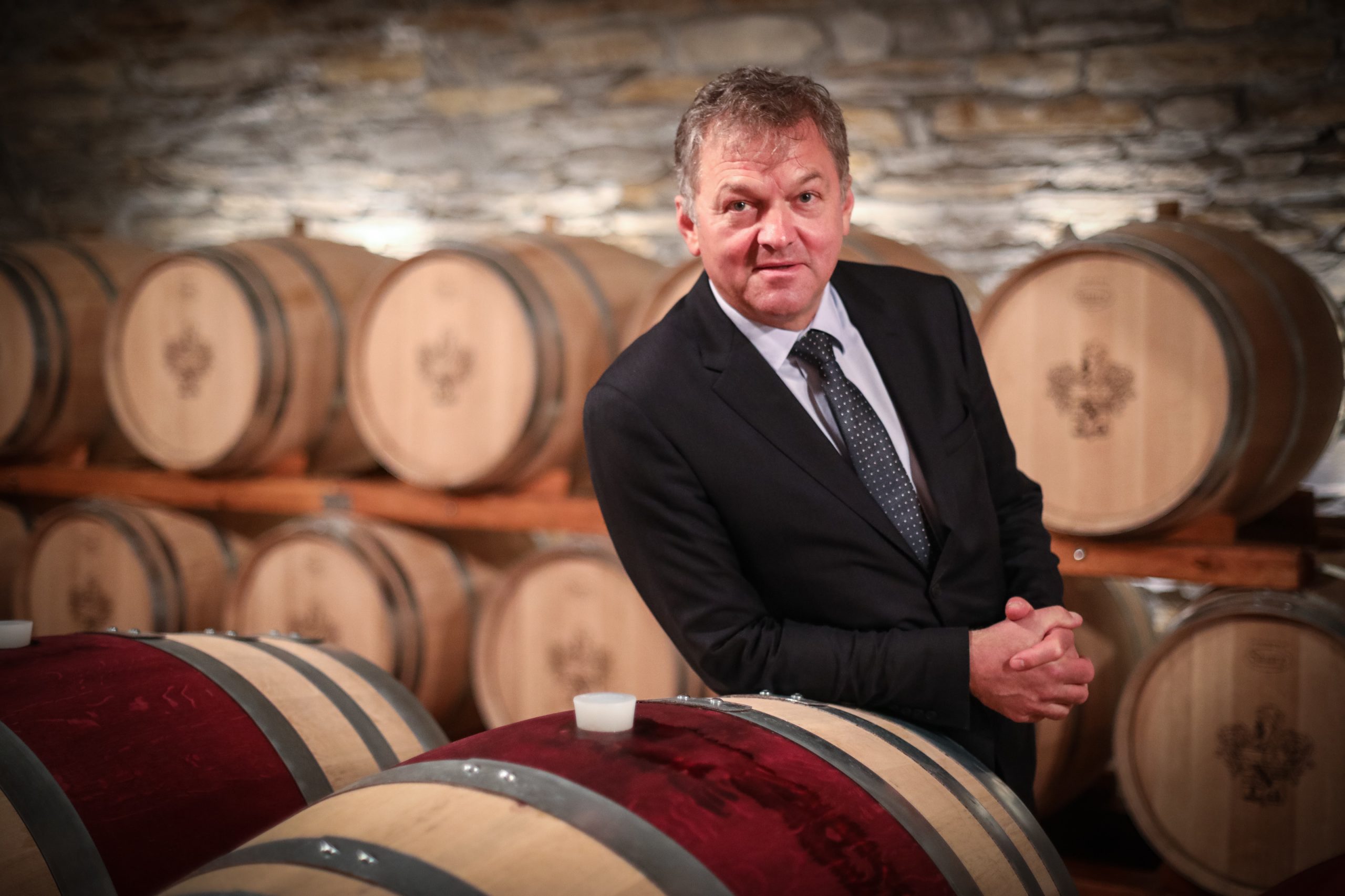
Why is Slovenian Wine among the best in the world? Which wine from your cellar are you most proud of?
SILVAN PERŠOLJA: According to the belief of some wine experts, Slovenian vineyards are among the top 5% of the best grape-growing regions of the world. This is supported by the fact that many countries are either in a transition from a Mediterranean to a Continental climate or on a transition from a Continental to an Alpine climate. This also applies to Brda, which lies at the crossroads of the Mediterranean and the Alpine region. Brda is located where cold and warm air meet, and in conjunction with the unique rich local soil, promotes the production of internationally recognised and award-winning white and red wines.
ANDREJ VALENTINČIČ: Among the wines in our range, I am most proud of Rebula Bagueri Superior. Rebula is the variety that best represents Brda. Brda is the home of Rebula. In 2018, the 2013 Vintage Rebula Bagueri Superior received 97 points out of 100 and a platinum medal at the prestigious British Decanter World Wine Awards. It is also a regular award winner every year at both domestic and foreign competitions. Last year, on its 30th anniversary, the Bagueri Superior brand, recorded a video in collaboration with the famous chef, Tomaž Kavčič, about a dish that goes perfectly with our Rebula Bagueri Superior.
How does the wine-drinking culture in Slovenia differ from the international scene? Why do you think these differences occur?
SILVAN PERŠOLJA: I personally think that wine drinking culture in Slovenia is even more popular than in Austria and Italy. I am pleased by the fact that in recent years the culture of wine drinking in Slovenia has continued to grow, influenced by the increasing awareness of healthy eating as well as the growing interest in haute cuisine and as a result, the excellent wines that accompany it.
ANDREJ VALENTINČIČ: The answer to this question depends on whom we compare ourselves to. If we compare ourselves to Europeans, our wine culture is comparable to the European average. However, this is completely different in countries where there is little or no history of wine-drinking tradition, such as in China and the USA. The culture of wine drinking is higher in countries with a long-established heritage of wine production than in countries where wine is just part of people’s dining habits. The quality is usually directly proportional to the consumption of wine per capita, which is much higher in traditional wine-producing countries such as Italy, France, Spain, and of course, Slovenia.

Does wine play a specific role in the business world? Why?
SILVAN PERŠOLJA: Wine exemplifies the tradition of the territory and the culture of the people. Wine, as one of the oldest known drinks, has played a major part in a wide variety of business meetings, events, and gatherings for centuries. It is an excellent connecting link and is well-recognised in the business world. Wine is often used for business gifts, and is perceived as a gift of high status.
ANDREJ VALENTINČIČ: In countries that traditionally produce wine, wine is a key part of business culture, an almost indispensable part of business life. In Russia, for example, this role is taken by vodka. However, there is already a growing interest in wine in Russia and its surroundings.
Are you planning to introduce innovations in 2023 and in the future - both at the production level, as well as in sales?
SILVAN PERŠOLJA: In 2023, we will pay even more attention to the circular economy and focus on sustainable production, as it is considered the foremost way ahead and the leading goal of Klet Brda. We will continue to build on this strategy and gradually start to introduce organic production.
ANDREJ VALENTINČIČ: Innovation is a constant in the field of wine and viticulture. Last year, as part of the sustainable production in Klet Brda, we, together with our partners Telekom Slovenije and the company EFOS, implemented a Slovenian pilot project of smart viticulture with remote pest control. This year we will build on this cooperation, as we believe that digitalization in viticulture represents a big step towards even more sustainable production.
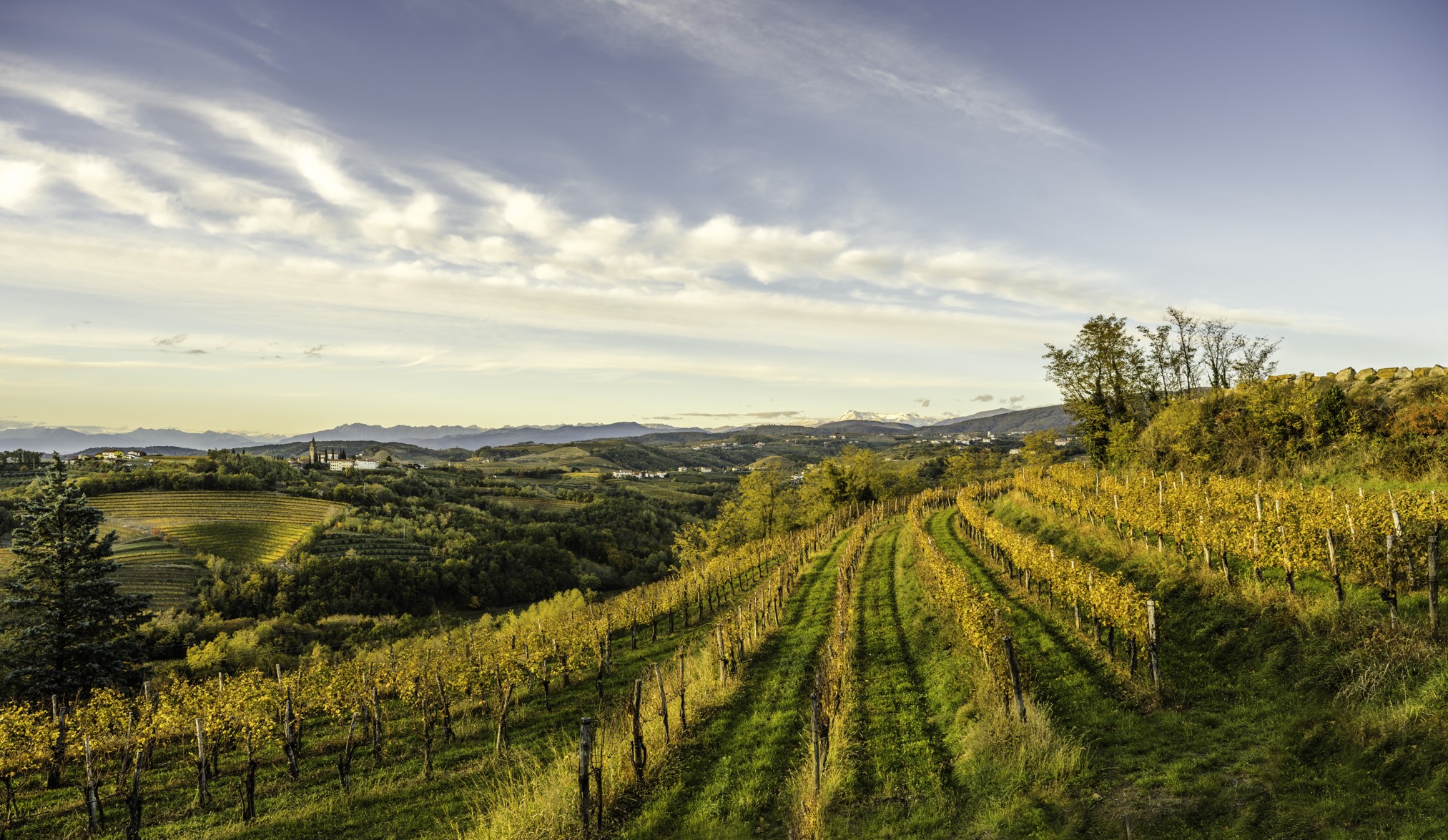
THE ADRIATIC
This article was originally published in The Adriatic Journal: Strategic Foresight 2023.
If you want a copy, please contact us at info@adriaticjournal.com.
Turkish Breakfast for Charitable Purposes
Turkish breakfast for at the Grand Plaza
editor
Carol Jardine
JOURNALIST AT THE ADRIATIC
Just over a month ago disaster struck in Turkey and Syria. A major earthquake measuring Mw 7.8 destroyed many cities in the east of Turkey and towns in neighbourind Syria. Texts and WhatsApp from my former students at the renowned Bogazici University, Istanbul erupted on my mobile. Bogazici University is one of the top two state universities in Turkey, admitting only the brightest and the best students from all over Turkey. Many came from the East, and their families had warmly hosted me while on a trip to the East, and enduring friendships has been made with grannies, grampas, nieces nephews, and parents.
I had just arrived in Sarajevo for a short break and was shocked and saddened by the texts I received, family missing, homes and businesses obliterated and everyone frozen in icy fear, as the shakes continued day after day and the sparsely clad inhabitants too fearful to enter their homes. I felt helpless and deeply saddened as family deaths were reported daily.
Money, clothes, food and blankets were needed urgently. Urgent fundraising was required, but I needed a voice. Having worked for The Adriatic in the past, I approached their kindly editor, Tine Kracun, and asked for his support in organizing a fundraising Turkish breakfast for the Earthquake Fund. He readily agreed, so all I needed was a venue. And the food. And the people.
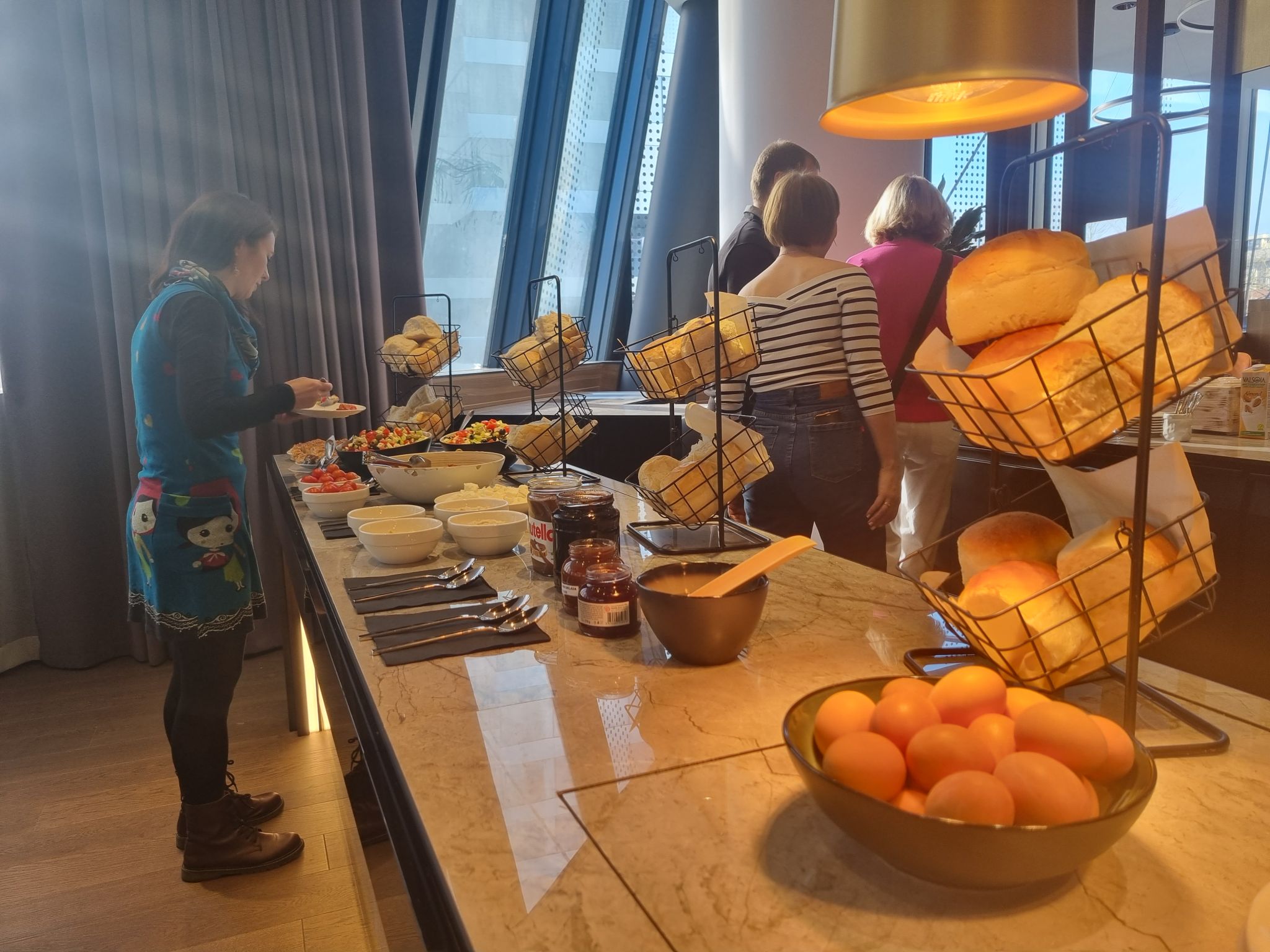
My next stop on that frantic morning was to the Grand Plaza, start at the top, I thought and work down. To my delight and amazement, they also readily agreed to donate their luxurious VIP Lounge and the coffee and tea, as well as their amazingly helpful Events Manager, Anja Zagar. Next stop, food – as an unaccomplished cook, I can manage grilled peppers and humous, but not much more – but my Turkish friend, Event Manager, Ebru Mumcouglu came to the rescue, despite already being heavily involved with arranging clothes and blanket collections. She coordinated three or four Turkish friends to make the breakfast an authentic Turkish delight. Ebru and her friends donated the most delicious Turkish breakfast salads of feta cheese, tomatoes, cucumber and olives, cheese and meat borek, baklava, bread and real Turkish honey. The Adriatic and I provided fresh farm eggs, tomatoes, feta cheese, humous, peppers, olives and a variety of (Slovenian) jams. We estimated 25-30 attendees.
We advertised on Facebook and Linkedin and requested an RSVP. No replies were forthcoming, and friends were giving ambivalent “maybe’s” and by the night before we had received precisely zero replies! I had a sleepless night. Slovenia is not accustomed to this kind of fundraising, I was told.
The next morning at 7.30 am, the food started to arrive and by 8.30 am there was a breakfast buffet fit for a sultan, and we waited with bated breath…
My friend, Andreja arrived first, a Professor from the university, and gradually, people trickled in filling the grand table with a host of tongues – Russian, Hungarian, English, Turkish and of course, Slovenian, and by 9.00 am the breakfast was in full flow. I was too wound up to eat, and although I hope I managed to thank everyone that came personally, I didn’t make my intended speech.
However, I am fully aware that the attendees knew why they were there and everyone contributed to the Disasters Emergency Committee, Turkey-Syria Earthquake Appeal. We made 500 Euros.
As the crowd dispersed, we were still left with a feast of food, and with the agreement of ISR and Ebru, the hotel helped us package up the remaining food and Anja, the hotel manager and my dentist friend, Ljubica, helped med carry three large bags of goodies around the corner to the Kralje Street Hostel for the homeless where the kings of the street, had a meal fit for a king!
Fundraising is not common in Slovenia, and I am hoping that we, in Slovenia, can hold quizzes, tennis tournaments and other fun events to raise money and awareness for needy causes in the future.
The Driving Force Towards Food Security
Local food production
editor
Špela Bizjak
JOURNALIST AT THE ADRIATIC
As the global population continues to grow, the demand for food has skyrocketed. It is estimated that by 2050, global food production will have to increase by 70-100% to keep up with the ongoing demand.
The rising demand has made it difficult for farmers and has put a strain on the environment, however local food production reduces the amount of energy required to transport food, and it also reduces the need for artificial preservatives and additives. In addition, buying local food allows for better traceability and accountability, consequently, local food production is beneficial for all involved, and it should comprise a major part of any supermarket’s offerings.

Observing the positive trends of choosing locally produced food
Buying local food is a great way to reduce your environmental footprint, as it eliminates the need for long-distance transportation of food. Local food production is another way to reduce your environmental footprint while still having access to fresh, local food. Furthermore, by supporting local farms, you are directly investing in the future of local agriculture and food production in your area, and this helps to ensure that there are local, sustainable sources of food for many generations to come.
Supermarkets are increasingly offering more and more local food from farmers to meet the demand for fresher, more sustainable and more nutritious food options. By supporting these local farmers, supermarkets are helping to strengthen the local economy while also providing customers with access to delicious and healthy food. Not only are customers able to enjoy the very freshest fruit and vegetables, but they can also find small-batch jams, sauces, honey, and other products made by local artisans. As more people become aware of the benefits of buying local produce, supermarkets can widen their range of local food and help to support local farmers and the local economy.
Mercator leads the way in food security
Mercator is at the forefront of providing Slovenia and its population with high quality and widely available locally produced food. Food security has been a top priority in Slovenia and worldwide since the start of pandemic. It was at this time that Mercator’s professionalism, dedication and wide-ranging network of stores managed to provide households in Slovenia and the Adriatic region with a stable supply of food and other household necessities. In autumn, as macroeconomic changes began to take place, Mercator responded with a national campaign slogan – Your every purchase makes a difference (Slovenian: Vsak vaš nakup šteje), which encouraged Slovenian consumers to purchase high quality locally produced food to boost food security and to support local producers. For instance, Mercator buys 50,000 tons of milk and dairy products yearly from local suppliers.
Local food production and self-supply are crucial for sustainable food production and for strengthening local economies. By purchasing shares in local producers, we are not only supporting them but also supporting local communities by ensuring that they have access to fresh, nutritious food and that local businesses remain operable.
THE ADRIATIC
This article was originally published in The Adriatic Journal: Strategic Foresight 2023.
If you want a copy, please contact us at info@adriaticjournal.com.
Living Rooms are Becoming New Entertainment Hubs
Unlimited communication
editor
Jan Tomše
JOURNALIST AT THE ADRIATIC
The United Group, the region's leading provider of TV content and digital solutions in the Western Balkans.
The days of going home early for a favourite series or a much-anticipated film are well and truly behind us. Today’s pace of life dictates many different user needs and high and demanding expectations that are constantly growing. We can have access to digital services virtually anytime and anywhere, and the same applies to our TV-watching habits.
The figures speak for themselves – more than 5 billion people or twothirds of the world’s population use mobile phones, and the number of internet users is of similar dimensions. In quantitative terms, this translates into almost 7 hours a day or 40% of our waking time spent on the internet or mobiles. Television has almost 5.5 billion viewers worldwide, with users spending almost 2 hours a day on linear TV and almost an hour and a half on TV streaming content.
In the Balkans, the United Group has taken the lead in meeting the needs and expectations of the region’s inhabitants. Here, the TV and digital solution provider’s comparative advantage is advanced digitalisation. After being the first in the region to launch digital TV non-linear features such as rewind, fast-forward and the basics of video-on-demand, they have now gone a step further by improving the user experience, explains Ditka Maučec, Product Director at United Group.
To do this, we needed a significant amount of know-how, experience and flexibility, and of course a platform that could be customised. We developed EON, a smart and advanced platform that has delivered a unique user experience from the very beginning, and offers not only live TV viewing, but also the indispensable non-linear way of watching TV content anytime and anywhere – on users’ mobile phones, tablets, and computers, without plugging in a to set-top box. Hence, EON offers the ultimate experience, allowing users to enjoy their content in the best way possible.’
The living room as an entertainment hub
With the EON platform, the way we watch TV has changed dramatically, living rooms have suddenly become entertainment hubs. Users can watch their favourite content for up to seven days after being broadcast. The EON platform also allows them to scroll through the timeline with images, making delayed viewing even easier. The platform offers a substantial video club with more than 24,500 content titles and, at no extra cost, films and series for even the most demanding users. EON also offers a range of advanced and useful functions, such as special profiles for family members for example, EON Kids which is a safe environment for children, and EON Connect provides secure home internet control, as well as numerous apps and games, all in one place.

40% of views are via time-shift
One of the key characteristics of today’s users is that they want to manage their own time. They no longer just watch TV on their TV sets, but increasingly on their mobile phones, tablets and computers. ‘Our average user has 2.5 devices activated to watch TV and 40% of viewing time happens via time-shift and video-on demand. On mobile devices, this percentage rises to more than 60%’, says United Group’s Product Director.
The TV schemes include a wide range of local TV programmes, many of which are synchronised or subtitled. ‘Users can search for content and operate their TVs in their native language without the need for a smart TV, as these solutions are already part of the package we offer today. The EON Smart Box turns any TV into a smart TV and gives you access to the world of the internet,’ says Maučec. ‘The United Group has experienced remarkable growth in recent years. They have doubled the number of subscribers in eight Western Balkans countries and positioned themselves as the number one regional provider. They offer premium TV and digital content in the local languages, apart from English, with local channels and localised applications included in every single market where they are present.’ Explains Maučec.
“2023 will be a challenging year because we will face inflation, cost increases and the energy crisis, but on the other hand, it will be a year of opportunity to further consolidate markets and focus on services and support for business customers.”
Trend setters
In the digital world, everyone is in competition with everyone else, and it’s important to understand that, no matter what industry you’re in. In the digital world, your competition is Amazon, Uber and other digital platform providers. How is the United Group coping with this?
The company’s vision for its premium EON solution is to become an indispensable partner for all generations of South East European consumers, providing them with a superior TV experience. ‘The interface is virtually all-inone. It’s modern and intuitive, and with the help of the advanced algorithms we use, we can give our users recommendations on exactly what they like best. We are highly competitive with all the global players in this area and we are continually developing better and better products.’ says Maučec.
The company’s main pillar is its development centre, United Cloud. It is the leading innovation centre in the region. The centre develops digital services in the telecommunications, media and TV industries, as well as integrated solutions for products of the future. The plan for the centre is to eventually offer innovations that others will follow and drive trends in user experience across the region.
Leader in the competitive mobile market
Mobile telephony is an integral part of the digitalisation ecosystem. Telemach is a mobile operator under the umbrella of the United Group, and it has been the fastest-growing mobile operator in Slovenia for many years. However, Maučec remarks that the competition for users is challenging, as the Slovenian market is highly developed, similarly in Croatia and Greece where the company is also present. In Croatia, the basis of Telemach’s business is mobile telephony, and they offer upgraded packages, but they also have a strong focus on building the most technologically advanced fixed network offering high gigabyte speeds in order to offer the fastest internet speed to the largest possible population. At the same time, the integration of newly acquired companies NOVA and WIND is taking place in Greece, and they have just started offering fixed and mobile services there.
Mobile phone use has long ceased to be just about making calls. Today, communication is done through the use of data, via applications such as Viber, WhatsUp, Telegram and others. The same is the case with social media platforms that have become the chief information and amusement channels around the world. Users demand availability, everywhere and at any time, and they want seamless access to their favourite music, TV shows, and sports events. ‘We at United Group are aware of two things, firstly, the importance of reliable infrastructure, therefore we are constantly developing and investing in cutting-edge technologies, and secondly, that data transmission is of paramount importance for the needs of today’s users. We have been steadily increasing it in our packages at no extra cost. While the NAJVEČ package has been offering unlimited communication for some time, this year it has been joined by the ŠE VEČ package with unlimited data. Since the launch in 2015, all of our mobile packages have followed their original mission, which is based on unlimited or high data transfer, transparency, the inclusion of additional services and a seamless mobile network.’ says Maučec.
The United Group in Bulgaria was also the first to launch a brand new portfolio of mobile packages with unlimited data, differing only in internet speed. ‘Due to strong interest among users in Bulgaria we launched a similar package in Slovenia, and we were proven right as the users’ response was extraordinary,’ Maučeč explains.
Giving back as a fundamental principle
The United Group pursues the social and environmental goals and the economic aspects of sustainable business practices through various activities and projects. Through major investments in network infrastructure and digital education, they support social and economic development in markets that altogether encompass 40 million people, and actively reduce their environmental impact.
‘That’s why we joined the Science Based Target initiative. This enables us to effectively manage our environmental risks, reduce our emissions, set climate change policies and create different energy use and generation solutions. We are also committed to reducing CO2 emissions by around 60% by 2030 compared to 2020 levels. For this reason, we are also transitioning to ‘clean’ energy,’ says Ditka Maučec.
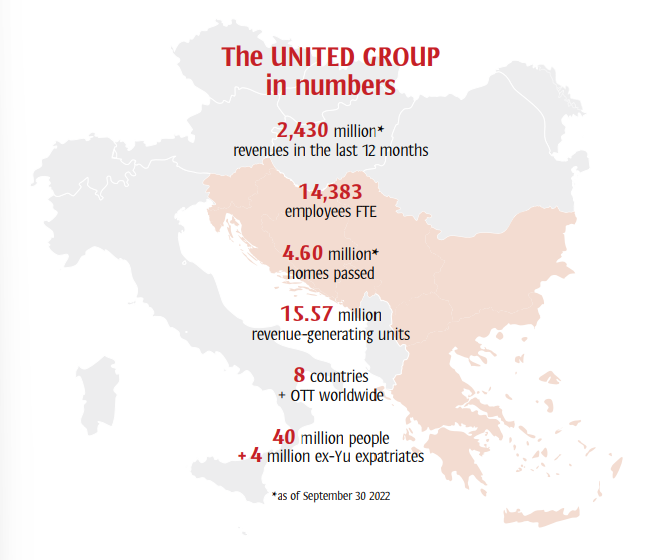
THE ADRIATIC
This article was originally published in The Adriatic Journal: Strategic Foresight 2023.
If you want a copy, please contact us at info@adriaticjournal.com.
The Petrol Group is working intensively on solar power plant projects
Energy transition
editor
Petrol Group
In the context of energy transition, Petrol is investing in renewable power plants and helping increase the security of energy supply. In addition to wind, the company sees great potential especially in solar power.
Increasing the share of renewable energy sources is an important step in reducing carbon emissions and dependence on fossil fuels, with increased energy security alongside decreased dependence on third countries lately being stressed as an advantage. More than ever before, the European Union has been looking at new ways to ensure energy security; this can be significantly facilitated by energy companies which, by investing in new production facilities such as wind and solar power plants, are helping to increase energy independence. One of such companies, Petrol, is planning to plug its three largest solar power plants into the power grid by summer 2023.
Not just wind, large solar power plants also
The Petrol Group already operates two wind parks with a total of 18 wind power plants in Croatia, five small hydroelectric power plants in Bosnia and one in Serbia, and 30 smaller solar power plants installed on buildings in Slovenia. Petrol is proud to have also started building large stand-alone solar power plants, the first three in the area of Knin in Croatia: Suknovci, Pliskovo, and Vrbnik, with a total installed capacity of 22 MW, together representing one of the largest solar power plants in the region.
The three stand-alone solar power plants are situated in rocky settings above the Adriatic Coast marked by infertile soil and an abundance of sunny days, making the area perfect for solar. The three solar parks, Suknovci, Pliskovo, and Vrbnik, will comprise of 40,100 solar panels that will generate enough green electricity for as many as 8,500 households. To minimise the adverse effects on the environment, the substructure of the solar power plants is attached to ground-mounted foundations with no concrete reinforcement; therefore, the solar power plants can be easily removed after the end of their lifespan and the original appearance of the area can be quickly restored.
Solar panels on Petrol's buildings
In the context of the energy transition and with the goal to reduce its own carbon footprint as well as because of the advantages delivered by self-sufficiency and local energy generation, Petrol has decided to instal solar panels on its own buildings, such as rooftops of its points of sale, the latter as part of the Petrol Green project which is partly financed through a grant received from the Cohesion Fund. In the first phase of the project, solar panels will be installed on 46 points of sale, followed by 24 in the second phase. Petrol has set a goal to equip its entire point-of-sale network with solar panels; this way, its points of sale will become as self-sufficient as possible and generate own energy which, alongside storage batteries, will also be used for e-charging infrastructure.
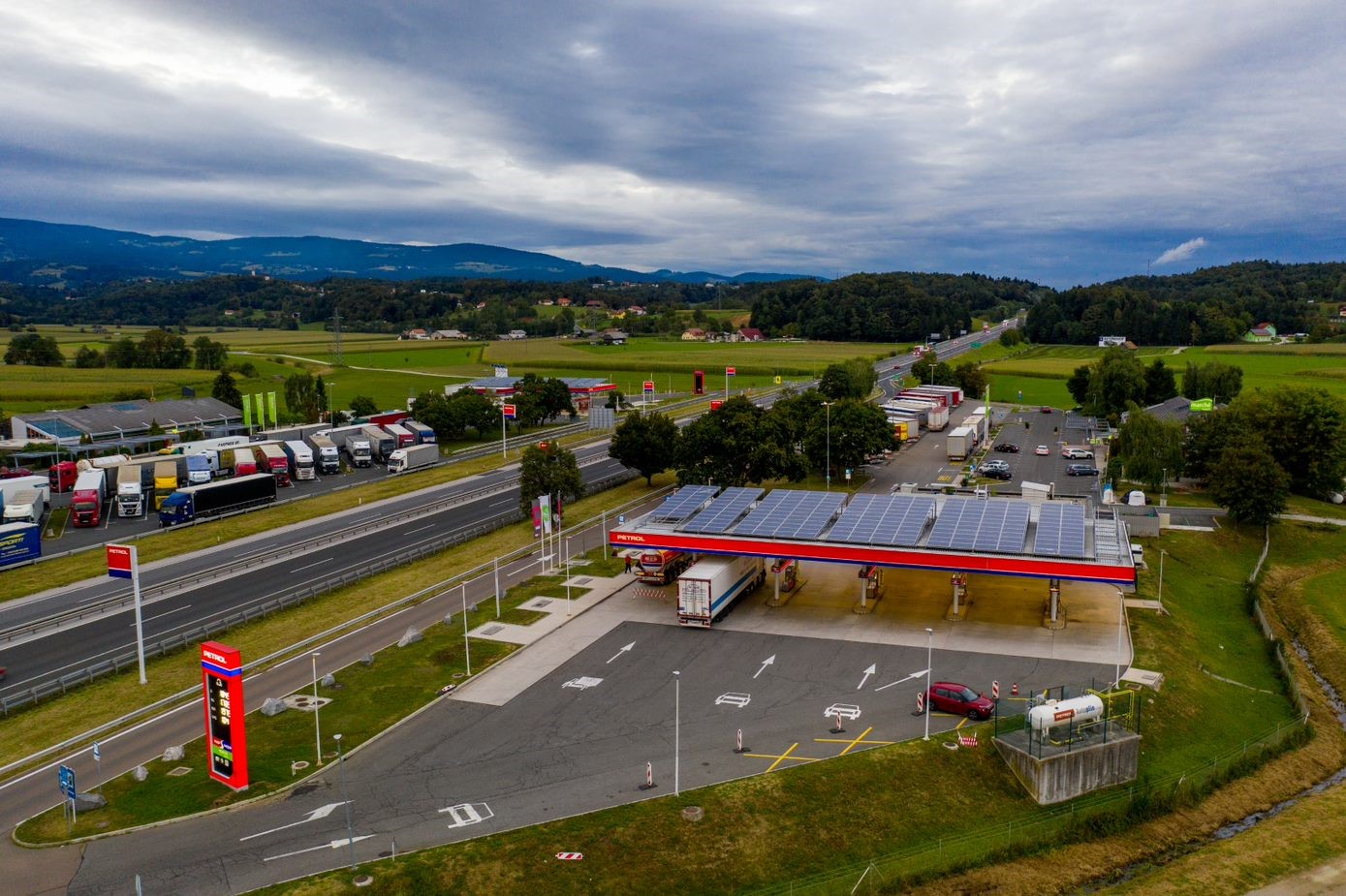
Installation of solar power plants also in cooperation with partners
In addition to investing in the construction of own renewable energy production, the Petrol Group is installing solar power plants as part of its comprehensive energy solutions for various stakeholders – public buildings, industry, other business activities, and households. Petrol connects several solutions into one complete story for its partners and helps them design a new concept of an energy system which is modern, efficient, environmentally friendly and energy self-sufficiency focused. Last year, Petrol made an important step towards a green future in cooperation with Cinkarna Celje. The result of their cooperation is the installation of Petrol’s largest solar power plant in Slovenia, and one of the many planned by Cinkarna Celje, with a capacity of 1 MW. The solar power plant comprises 2,222 solar modules with a total rated capacity of 1 MW and the estimated annual electricity generation of 1,160 MWh, enough for about 330 average households.
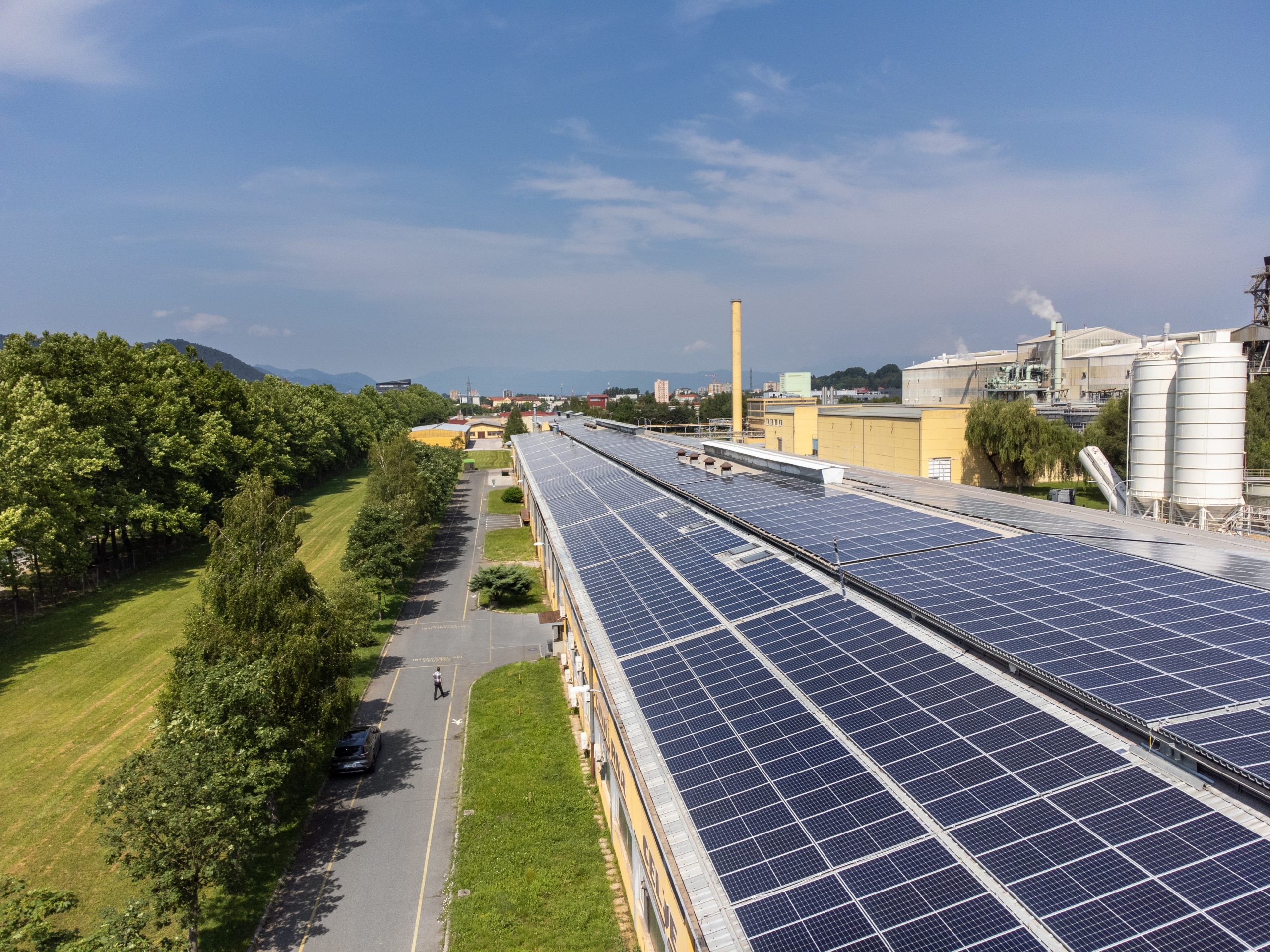
THE ADRIATIC
This article was originally published in The Adriatic Journal: Strategic Foresight 2023.
If you want a copy, please contact us at info@adriaticjournal.com.

